Items
topic_interest is exactly
arizona state university
-
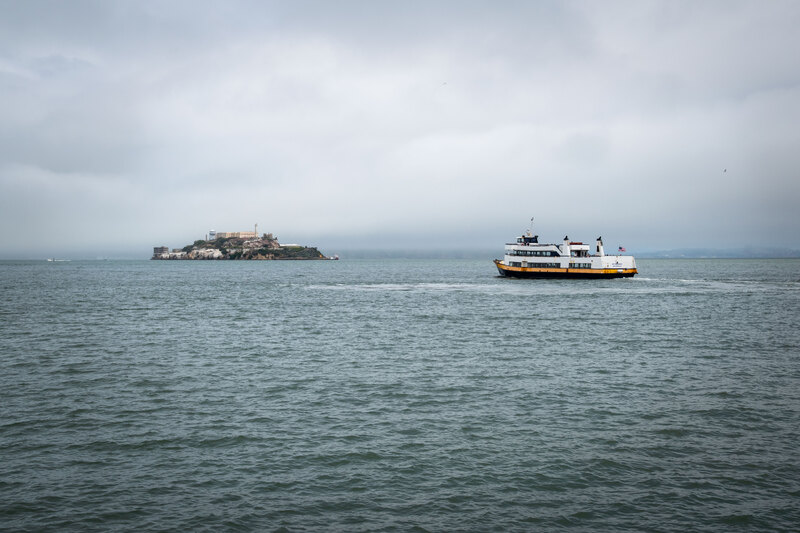 2022-07-01
2022-07-01Delay to The Bay
My plans to visit San Francisco in 2020 came to a halt with the outbreak of the Coronavirus. As a high school teacher, I was looking forward to my long awaited-spring break. It had been quite some years since my last visit to the San Francisco, and I knew a trip to ‘The Bay’ was long overdue. I booked a flight, hotel, and waited patiently as the weeks went by. Spring was coming up and there were heavy concerns about COVID 19 spreading into North America. I was slightly concerned but figured I would be safe to make this trip. As news broke out about cases emerging in San Francisco, the nation went into hysteria. I was not skeptic about the hazard of Coronavirus, but selfishly planned to proceed with the trip. Then my father called me. My parents, both in their seventies were definitely at risk, especially my mother who struggled with health since my childhood. My father asked me kindly not to go to San Francisco. Without hesitation, I canceled my flight and hotel. I had booked everything online through a third party and was unable to receive any refund. Bummed out, I knew it was the right thing to do. Coronavirus spread, schools shut down and my spring break prolonged. At first I was spending time kayaking, but the weather in Phoenix got so hot I had to stay inside. The Phoenix summer of 2020 had record breaking heat with 55 consecutive days of 115 degrees plus Fahrenheit temperatures. I was miserable. With concerns of my mom’s health, social distancing, living alone and bored, I was very unhappy. The unjustifiable killing of George Floyd caused anger, and rightfully so, across the nation which contributed to more hysteria. The only positive that came from that hot summer were my experiments in the kitchen. I would then deliver tasty meals for my parents. This was the one thing that made me happy. Unfortunately, my mother did not survive past the summer of 2020. She passed away in her sleep peacefully due to an unrelated COVID cause. I was on an all time low. Sad, empty, missing my students, and missing normal daily life. We had no idea how many people would die and when things would normalize. It was truly scary. Fast forward to 2022 and things were much better. I figured surviving 2020 made me stronger and much happier. Vaccinated and boosted, I decided to pursue my trip to San Francisco. I made the best of this short trip. I went to a party outside the Chase Center for the NBA Finals, in which the Golden State Warriors played against the Boston Celtics. For the first time, I took a ferry to Alcatraz. In China Town, I saw locals dance with dragons, in which one bopped me in the face while I was taking photos! Caught by surprise, I did not take offense to this. Observing how the dragons behaved with mischief, I knew it was all for fun. This made me laugh. This was a much-needed trip indeed. 2020 affected everyone around the world. With global hysteria, people getting sick, people dying, racial injustice, everyone except pandemic deniers and those oblivious to political issues resonated with fear. Passing through time, my 2022 trip to San Francisco was a rebirth. A rebirth to normalization. A rebirth to my passion of exploring culture. A rebirth of sanity, and a rebirth of controlling fear. A rebirth to laughter. With dragons, noodles, basketball, and Ghirardelli, the delay to ‘The Bay’ will forever be a golden memory. -
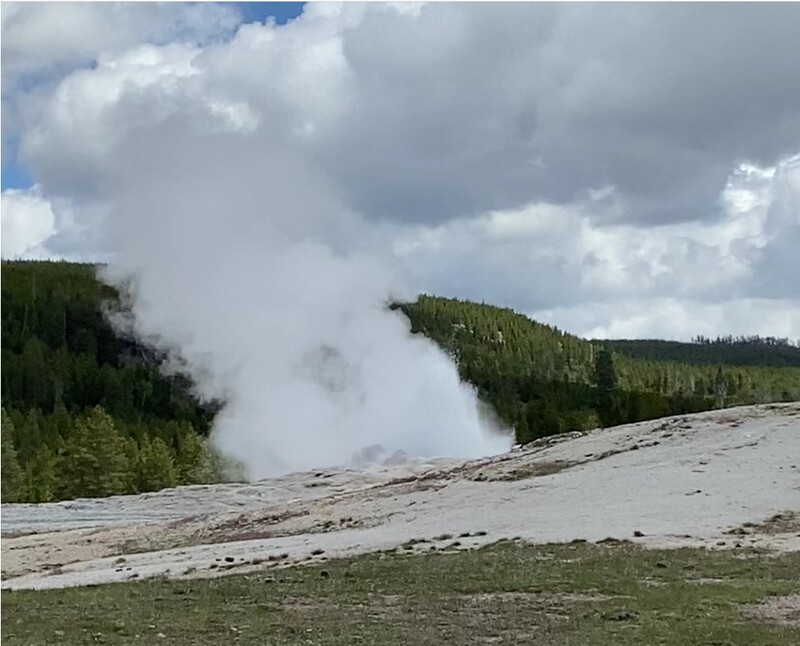 2022-06-01
2022-06-01Old Faithful Yellowstone National Park
The first trip my family and I took once COVID restrictions were lifted was to Yellowstone National Park in Wyoming. My family enjoys being outdoors and in nature and had been discussing a trip to Yellowstone for years. We rented a cabin a half hour north of the park and drove in everyday for four days. Each day, we took a different road so we could see as much of the park as possible. The most memorable part is that on the northern road, up in the mountains, there was still quite a bit of snow on the ground. About a week after we left, all that snow melted, flooded the Yellowstone River, and destroyed the road that we went in on everyday. I also enjoyed seeing the wildlife in a natural habitat, even if there were buffalo in the road a few times a day. The busiest day was the day we went to Old Faithful. Old Faithful is probably the most popular tourist attraction in the park aside from the wildlife. Everything in the area was busy; the gift shop, hotel, restaurants, boardwalks, parking lot, everything. This was the most people I saw in one place the entire trip. When we took this trip (June 2022), as far as I remember, there were no COVID restrictions in place. I would not have minded, and maybe even preferred, if there were as some places were quite compact. They did encourage social distancing in the indoor areas but nothing was enforced. It was, however, nice to experience the park in what could be perceived as normal. -
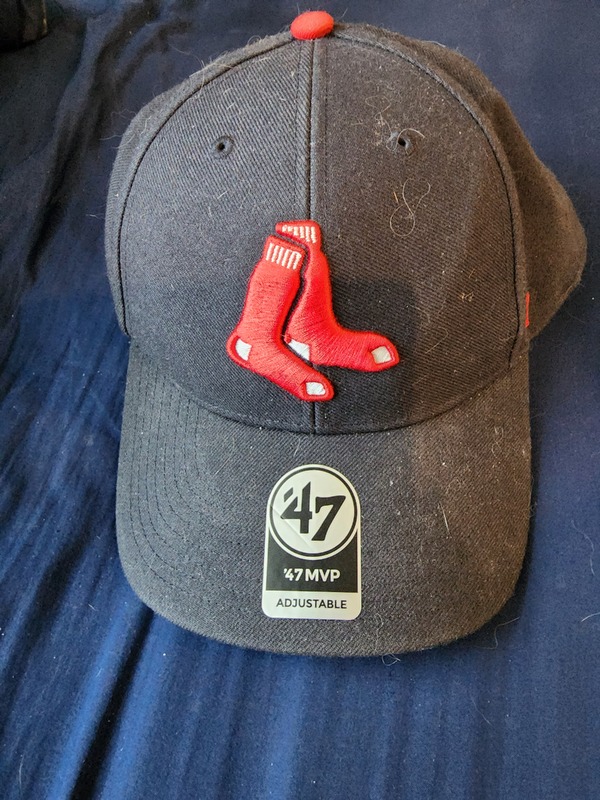 2022-09-09
2022-09-09Back in Boston
The story is of me and my father going to see the Red Sox play at Fenway. The hat in the picture is the one I got at ballpark. It is important to me because it was the resumption of a tradition that me and my father have done for years. -
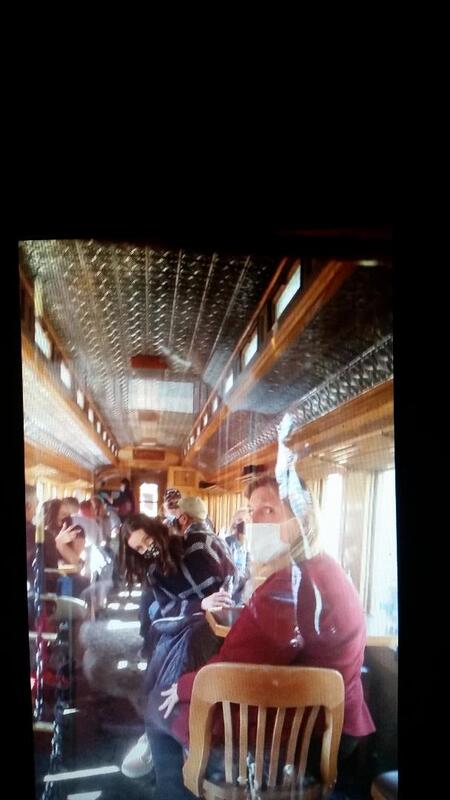 2021-04-12
2021-04-1221st Birthday Trip, Post-Pandemic
My twin sister and I turned 20 right after the beginning of the pandemic in April 2020. That birthday was a gigantic bummer, because all my friends had left my college campus and I was still there but couldn't visit home either due to Covid concerns (my parents are in their 60's and my sister has asthma). So, after a year of not traveling or doing very much else, my first post-covid trip was for my 21st birthday. Not yet ready to get back on airplanes but wanting to do something exciting, my mom, dad, sister, and I packed into the van for an 8-hour drive across Colorado to an Airbnb in Durango, near the southwest corner of the state. Durango is a cute little tourist town that's still sleepy from winter in April, and definitely non-traditional for a 21st birthday bash. We had two objectives for the trip: Mom and Dad were going to buy us our first (legal) alcoholic beverages, and we were going to take a ride on the narrow-gauge railroad that ran from Durango to the nearby tourist/old mining town of Silverton. The first goal was accomplished quickly upon our arrival; we located the old Strater hotel, built in 1887, complete with a bar where we immediately situated ourselves. The servers were dressed like flappers, all wearing masks, many matching the colorful fringes of their dresses. I ordered an old fashioned, was tipsy after half, and handed it off to my mom to finish. My dad had a great time shepherding us back to the van. The train ride the next day was the highlight of the trip. We bought tickets in advance, since only a limited number of seats could be filled in each car due to lingering covid precautions. Masks were also still required, except when eating and drinking (a full bar was available, as well as coffee and pastries). The train crept up into the mountains alongside a river, sometimes crossing over very tall trestle bridges, prompting my mom, who's afraid of heights, to pull her mask up over her eyes. Lunch, which was previously served on the train, was instead provided to us in pre-packaged boxes, to be eaten outside at picnic tables along the river where we were free to spread out and remove our masks. On the ride back to Durango, the full bar on the train was open, and most masks came off. My parents bought my sister and I our second drinks of being 21 (mimosas at 3:30pm, woo!) and we headed back to the Airbnb, stopping to pick up some Serious Texas Barbecue. While Covid ruined my plans for the 21st birthday party I thought I would have, it gave me a few years to slow down and to appreciate my family and small, meaningful, gatherings together, which I wouldn't trade for the wildest party in the world. -
2020-08-04
Lonely at the Lake
My family has owned a small cabin by a lake in Northern Minnesota for over 60 years. This is my favorite place in the world and was our family vacation destination every year. As years went on my dad and I are one of the few who continue this tradition. After quarantining in April and May and businesses slowly reopening in June we decided in August 2020 that it would be safe enough to go up there. However, this trip ended up being much different than usual. While Minnesota was under a mask mandate the area we were in was much different than the suburbs of Chicago. At home more often than not people did adhere to the mask mandate and there was a mandate to self-quarantine when returning to the state after traveling. The area where are cabin is located is very densely wooded and not exactly populated. The small town has about four hundred people and the nearest large grocery store is a forty-five-minute drive away. While grocery shopping in town it was clear the mask mandate was not as strictly followed up here. Only about half of the customers in the store were wearing masks. The likelihood of adhering to the mandate dropped even further once we reached our township. Even though there were signs posted to “wear your mask” my dad and I were considered the odd ones out at the bait shop or lumber store, as I did not see a single person with a mask on in the ten days we were up there. All of our neighbors who live on the road that hugs the bay are all older. I have known most of them my entire life and some have even watched my parents grow up. Many of them live downstate near the Twin Cities, and some even live out of state, but very few of them live up there full time due to the harsh weather and isolation. It wasn’t until the last few years that the country started to plow our road in the winter. This ten-day vacation is normally packed with multiple dinners at neighbors' houses, tubing and fishing, parties and yard games, and finally ending the night around a fire with our neighbors, their kids, and often their grandkids. This trip, there was none of that. Windows and doors were boarded up because out-of-state neighbors never made the trip up to open their cabins. Jetskis and other water toys were locked up because most older neighbors did not risk leaving quarantine. As far as we could tell it was just my dad and myself. Fishing was just the two of us, the only people we had to argue with over card games were each other, and we both fell asleep more than once on the boat or dock while reading books because it was so quiet. It might have been much more lonely and quiet than normal, but it was still relaxing to be surrounded by nature and absorb its sounds uninterrupted. COVID-19 changed my vacation, but not necessarily in a bad way. I am lucky to have a lake house that was isolated enough that COVID did not seem to touch it. Although we missed our neighbors and have since seen everyone the loneliness allowed for a sense of stillness, the ability to fully emerse myself in nature and relax. -
2021-05-03
Business As Usual
I am a software engineer at a small, fairly conservative, company in PA. Because of its small company status it was never required for our employees to work from home, at least that was what they told us, and throughout the pandemic it was in fact a requirement that we work from the office. I wasn’t surprised when I was told I would be traveling to Washington state but I was apprehensive. A few of our employees were getting stick but I had so far been safe. On May 3rd 2021 I drove to the airport with a mask on my face and hand sanitizer in my hand. The airport was fairly empty as it was early but the few people that wandered the terminals were wearing masks. My flight was long but I got some sleep with the help of some Dramamine. That night my coworkers went out to eat but I decided to order in. The next morning I headed downstairs to head out for my first appointment. At the registration counter there were brown paper lunch bags sitting out in a neat row, the woman behind the desk asked me if I would like a breakfast bag to-go. As I walked over to pick up one of the bags she explained to me how due to Covid-19 they are not longer serving a hot buffet breakfast but are instead were providing this to-go bag options, I smiled from underneath my mask and thanked her. The bag had a banana, a granola bar, a yogurt and a bottle of water. I drove to the meeting site and headed inside, there were few people around but I noticed no one was wearing a mask, I felt like my light blue mask was a huge neon sign directing everyone’s attention to me. When I arrived at the designated meeting room I set up my computer and prepared the demo while I waited for others to arrive. One by one they walked in, greeted me, shook my hand and took a seat. Still no one was wearing a mask or if they were it was not secured properly, I felt embarrassed being the only one with a mask on. Once everyone arrived I stood up and looked at the room, everyone was looking right back at me, waiting. I took off my mask and began the meeting. The rest of the week was more of the same and the trip home was uneventful. A few days after getting home I tested positive for Covid-19 and was finally allowed to work from home, at least until I got better. -
2020-10-05
Water Slides in the Days of Covid
My family resided in Columbus, Georgia during the Covid-19 pandemic. In October 2020 my sister-in-law’s family came to visit us from Arizona. We decided to take our families to Great Wolf Lodge in LaGrange, Georgia, just 45 minutes from my home, for a two-day vacation. This was my first experience traveling after travel restrictions were lifted. Great Wolf Lodge houses an indoor water park, restaurants, and family entertainment attractions, as well as hotel accommodations all in one building. My family had visited before the pandemic, so we were familiar with the resort and procedures. This made changes in policies and behavior more evident than they may have been otherwise. Safety protocol set in place at Great Wolf Lodge included mandatory mask wearing in the hallways and open areas of the resort. Masks were not required in the waterpark; however, signs were posted throughout detailing mandatory social distancing protocol. Individuals were to remain at least six feet apart from each other in all areas, especially when waiting in lines. The guidelines were a nice idea, but large swarms of children eager to get onto a waterslide cared little for waiting in lines any distance apart. The adults seemed to feel the same way too. There was no personal space while waiting in lines, much less six feet social distance. In normal times, Great Wolf hosts bedtime dance parties and stories in their main lobby for the kids. Due to Covid restrictions, however, these dance parties were canceled and instead were broadcast on a set TV channel that could be viewed from guests' rooms. Our families arrived around 1:00 in the afternoon on day one. One person went in to do the checking in and then we headed to our rooms to change and head to the park. Everyone played for at least three hours. A few of the older kids tired out earlier and headed back to the rooms. The rest of us headed back to the rooms for dinner with the plan to meet up again afterward and play until the park shut down. Over the next hour, almost all of my kids started coughing. We started to wonder if they were having a reaction to the chlorine. Then the runny noses started and even the most excited kids said they were too tired to go back that night. After talking to my sister-in-law, the same thing was happening in her family. We decided to call it a night and check back in the morning. By morning, we had to call it. Even mild cold symptoms were enough in those days to get you thrown out of public places and we had to be cautious with even the smallest symptom that might indicate Covid-19. We knew the only responsible thing was to pack it up and head home. We had a great three hour vacation the day before, but the rest of it just wasn’t going to happen. It was the most expensive three hour vacation I think I’ll ever have. We felt like criminals smuggling our tightly masked children through the halls that morning and begging them to hold in their sneezes or coughs until we got outside. We were so glad we had chosen to vacation only 45 minutes from home that time. The colds passed, and eventually we returned to Great Wolf Lodge to enjoy a full vacation. We still laugh, though, about our attempt at a “normal” vacation in the midst of Covid-19. -
2020-12
Hawaii - December 2020
In March of 2020 my family and I were supposed to go to Hawaii for our spring break. When I was at work around St. Patrick's day, the school administration announced that all sports were postponed because of covid-19. A couple of days later I found out that we would be moving to virtual learning until spring break. During this time I remained hopeful that we would be back in the classroom after the break and that I would still be able to visit Hawaii. As the weeks went on it became clear that this was not the case. Eventually we moved to permanent virtual learning and the airlines canceled and refunded my ticket for Hawaii. As 2020 continued on I became more and more frustrated over the impact of covid, especially as what seemed like 3 weeks at home, turned in to several months without travel and in person interaction. In December of 2020, after completing a semester of half virtual, half in person learning I was in need of a break and a change of scenery. On Christmas my family and I found really cheap flights to Hawaii, however these flights were leaving the next day. Since I was a teacher on Christmas Break I had the time off, the only issue was that we needed to get a negative covid test before landing in Maui. We quickly booked the flights and scrambled to find a place we could get a covid test. In order to get off of the plane in Hawaii we needed to take a covid test 12 hours before arrival and our results needed to be negative. We did not have enough time before our flight to have a test shipped to our house nor did we have enough time to wait 2-3 days for results. Luckily we found a place 45 minutes from where we lived that had an opening for four rapid tests. After acquiring our test, 18 hours before our flight we eagerly awaited the results. All four of us had a negative test and we were able to board our flight to Hawaii. When we landed in Hawaii, in order to get off of the plane we had to show our negative test results. If someone did not have test results they had to remain on the plane and wait for it to return to the mainland. After showing our tests, we had our temperatures taken again and and our visit, including our accommodations, had to registered. The remainder of our trip to Hawaii was relaxing. Although it was weird to walk on the beach with a mask and sit far away from other guests, it was nice to get away. While we were in Hawaii I remember talking to a waitress we had that explained that from March to July residents were not allowed to enjoy the beaches. She described how lonely and isolated she felt stuck in her small apartment by herself. Even though it was difficult to get to Hawaii during covid, we needed a getaway and the hospitality workers in Hawaii were glad to see things slowly picking up again. -
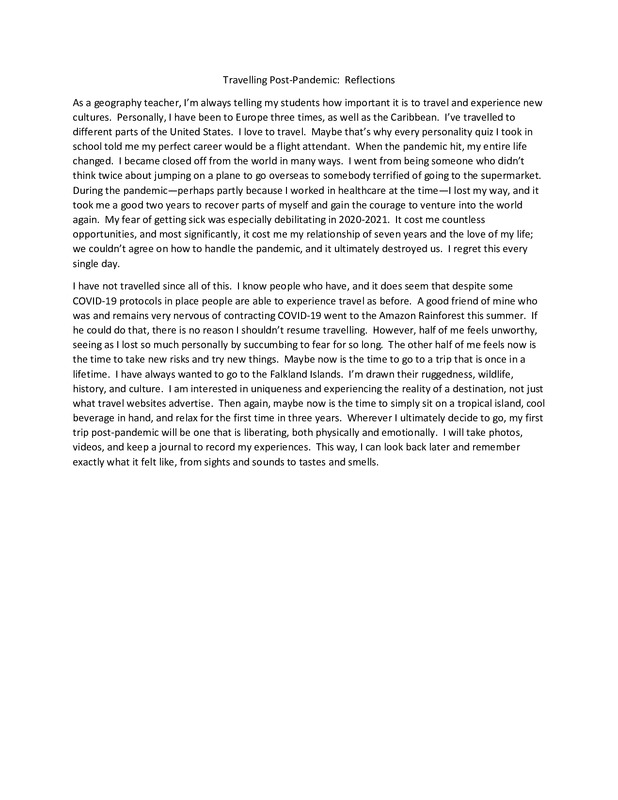 2023-01-29
2023-01-29Travelling Post-Pandemic: Reflections
Deciding whether or not to travel post-pandemic has been weighing on me emotionally. Here, I identify reasons I should vs should not travel, as well as where I would go and why. -
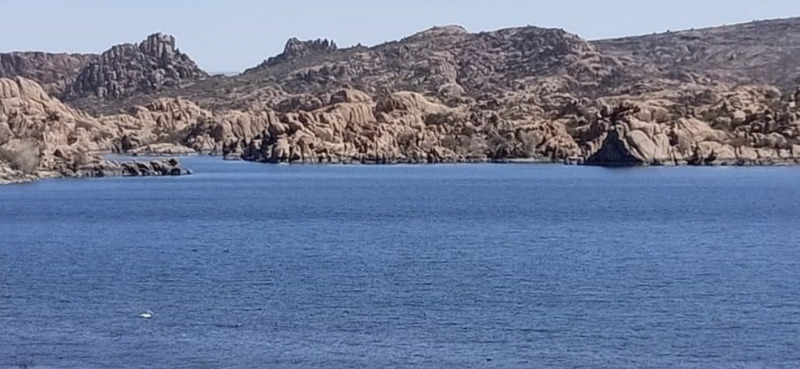 2021-03-30
2021-03-30Mojo Leaves
I took this photo of Watson Lake near the Dells five days after restrictions were lifted. From what I remember, there were no travel restrictions at the time. I was one of the few that lived on a large property, and I could stay busy feeding my animals, chopping firewood, and working on homework. However, concerning the photo, I was coming home from getting guitar strings in Prescott. It was the first time I had thought about playing music since my good friend Joseph Morganfield passed away in December 2020. He's the son of Muddy Waters and was one of my biggest supporters as an artist and musician. I always tell folks if I could have chosen a dad, it would have been Joseph. This day was important because I realized life would go on, after Covid, like it or not. -
2021-06-06
My Reverse Homecoming
The first trip my wife and I took after the COVID travel restrictions were lifted was a doozy. Our first flight in over a year was a three-hop journey from our small Montana town to Alaska for an old friend’s wedding. With a six-month-old. On our laps. The whole time. My wife and I had our first round of vaccines but worried about our daughter, who was still far too young to have a dose. After much risk assessment and consultation with our pediatrician, we decided to go for it. Mask wear was strictly enforced on the airplane and in most of the public places we found ourselves, and there was a profound and somewhat discomforting sense that we and our fellow travelers were searching for a way to exist comfortably in this new not-yet-maybe-never-post-COVID world. The thing I remember most, though, was how incredibly freeing it felt to be somewhere new again. So much time spent at home, however necessary, had inflicted an unhealthy solitude on much of society, and my first time solidly stepping away from that felt energizing. I’ve always loved to travel and doing so after the darkest days of the pandemic felt like a happy return to form. A reverse homecoming, if you will. -
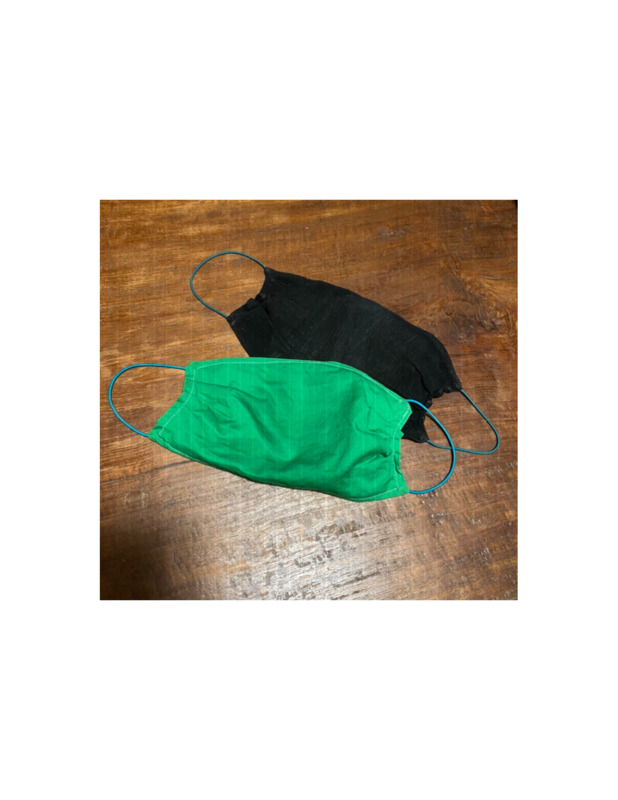 2020-03-26
2020-03-26The Sound of Sewing
I moved back in with my parents right before lockdown during the Covid-19 pandemic never imagining how long it would go on for. Since my mother is a teacher she was at home with my younger sister and me during the entire lockdown. My father still went to work because he works for a city and was part of the emergency response to the pandemic. I remember going to the grocery store with my sister and seeing the empty shelves unsure of when they would be restocked. I remember the panic of needing face masks and not being able to find any. That is when my mother decided she would make face masks for us, our extended family and to donate. She pulled out the sewing machine, which originally was for when my grandmother would come visit, and set it on the dining table. My grandmother used to sew all the time when she would visit us and make my sister and I dresses and even matching dresses for our dolls. It was always a sound I had associated with her. I helped my mother in ordering and looking up information on which materials were recommended by health officials, then she set to work, making hundreds of face masks. Every morning I would wake up to the sound of the sewing machine and my first thought would be of my grandmother. As time went on I associated the sound with the pandemic, more specifically lockdown. My mother enjoys doing different craft projects and she really enjoyed making the face masks. It was a fun activity that I also enjoyed helping her with. She made face masks for my dad’s work which were donated to the fire and police departments. We also mailed masks to our extended family in New Mexico, California, and Mexico. We wore the masks ourselves if we had to go anywhere during lockdown. The sound of the sewing machine became a regular occurrence during those early weeks of quarantine. The sewing machine, especially the sound, used to only represent my grandmother making gifts for us. In Mexico, where my grandmother still lives, she used to have a small business making and selling clothing as a way to earn extra much needed money. It wasn’t just a hobby at that time, but a necessity for her and her family. The sound of the sewing machine, became something I not only associated of my grandmother but of the beginning of quarantine and the importance of knowing certain basic skills. Knowing how to sew, and even being able to use a sewing machine, may seem like an unimportant skill nowadays, which was something I used to think. However, that skill helped my grandmother and decades later is still helping the rest of our family. -
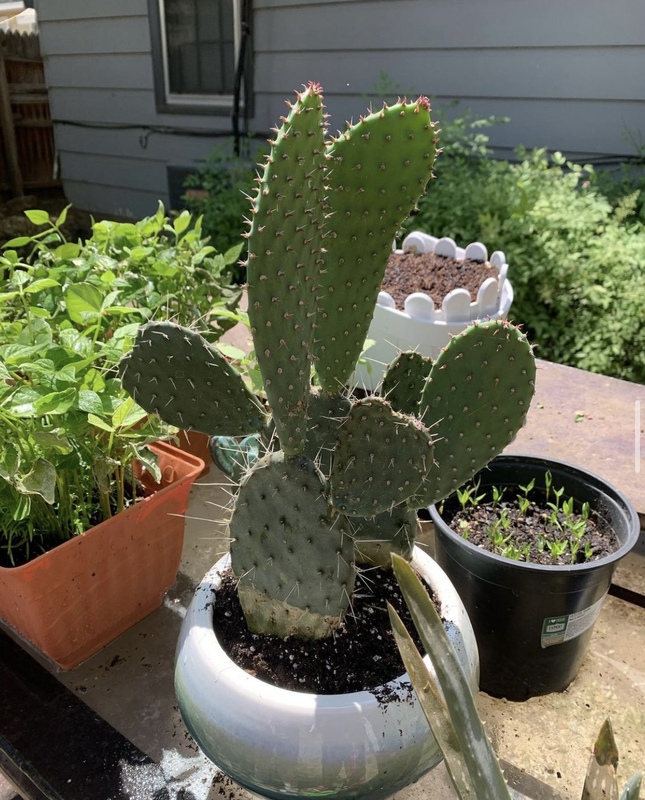 2020-07-21
2020-07-21I think I want to start a garden with you
I decided to start a garden during the pandemic with my girlfriend at the time (now wife). It was my senior year of college and life changed drastically in the spring when the pandemic hit. My wife and I had somewhat recently started dating at this point and suddenly we had to go on lockdown together to avoid any potential spread to her family since we both were required to go in person for our jobs. We went from dating to living together in an instant and it made us grow even closer. Together we tried to find quarantine hobbies to bide our time originally thinking that quarantine would only last a few months. I remember one day suggesting we start a garden in the backyard. My yard in Lubbock got so much sun it was just perfect for a garden. We slowly built a garden adding various plants from cactus and aloe vera to hot peppers, bean sprouts, and sunflowers. I loved going out there and caring for all the plants with my wife it was a real bonding experience. It was beautiful watching the whole process of our plants transform from little seeds to baby sprouts. I remember the way the new sprouts smelled crisp as they became verdant green and leafy. When we would water them on a particularly hot day it had a scent that reminded me of rainy summer days in Dallas when it got humid. I enjoyed getting to start this hobby that I most likely wouldn't have picked up at the time if I kept to my usual college routine. It was also a good distraction for both of us from the worries and anxieties of the pandemic. -
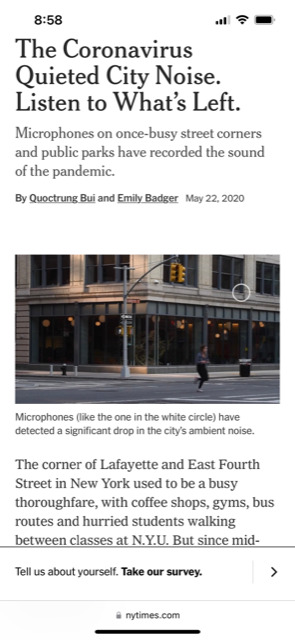 2020-05-01
2020-05-01The Hustle and Bustle That Went Naught
This story is nothing that many of you may not be familiar with, notably of those in metropolitan-like areas. Plus, I can not say that this story is anything deeply descriptive and the likes thereof, but it certainly had an impact on someone like me (along with others) that live in a city, notably if you are especially in or around New York City, the city that never sleeps. What brings me back to this? Well, not exactly the link that I provided that actually shows (at the time of course) a live-time recording of midtown Manhattan and its eerie sound, which is paradoxically a "sound" of a hovering-like quiescent stillness of keen silence (but a silent ambiance that was somewhat peculiarly enchanting) . Or rather, as the title alludes to, a sound that was "naught". At the time, it became so normal if you will (especially around 40 days since the lockdown went into effect), that it became a coincidentia oppositorum of sorts. One might ask, where is such a "unity of opposites" in effect whereby this was simply a "change" in the dynamics of your "said" environment? To start, the Newark (NJ) area is nothing BUT a concoction of familiar and somewhat pleasing noise as I sit in my half-airconditioned room, from the constant sound of public transportation busses passing by and their intrinsic slight familiar screeching stop, the talk of those a few floors down walking the streets, the constant sound(s) of cars flowing by, the sound of the famous pathway train into NYC in the faint distance (though it stops at Jersey City first), those at the corners (as inappropriate as it may sound) calling out that they got "x, y, and z" near Broad and Market Street, so forth and so on, to "almost" nothing! It was like something straight out of the novel Brave New World and other such pally stories of the sort. To me and many others around our surrounding areas, this was a moment in history that stood out, one that I can not recall in similarity since Tuesday, September 11th. 2001. Because the unity of these non-coherent opposites is in the simple fact that the innate aspect of a pandemic lockdown of a such magnitude as we had is quite obviously "silence" if you will, which is the opposite of what is immersed in a city of almost 300,000 (and that is of course not including the amount of citizens in neighboring metro-areas both east, north, and south of my location), nevertheless, they formed one coherent form of a dialectical force. Because it soon became a "norm" and it happened at quite an expedient rate in the larger scheme of things. Nothing was more "quiet" and "surreal" then the tragic events of 9/11, as it did not take some time for a similar situation to occur, as the event was so dynamic that everything I am speaking of happened at once, but and more importantly, day by day the city quickly gained back its ingrained normative environment. But the reason I arbitrarily picked the date of 5/1/2020, rather then use the date of the article, is because it was in early May where this began to slowly engulf me and took me back to one quite sunny day around noon (maybe a tad later), where all of this, "all of this" being that of what I speak of, struck me finally as something transformative (but far less than cathartic to say the least). I hope you enjoyed my little tidbit of what kind of impact COVID had on me (be it a self-like precept, photograph, video, etc...), particular using my experience in a sensory course of description. Sure, there was obviously other aspects that came into play with COVID-19 that eventually impacted us, but most of them were later on as the days moved by, while rather this experience was the first and the one that will stick with me anytime I think back to the pandemic. And the beauty of it, or rather lack thereof, all happened while simply sitting near my bed (hence against the window) while putting on my prosthetic legs. Cheers to you all! -
2020-03-14
A Theme Park on Day 1 of the Pandemic
Disneyland popcorn comes in a variety of colors and flavors- and with the opening of Galaxy’s Edge in 2019, my new favorite popcorn stand was ushered into being. This stand carried popcorn that had fruity pebble flavoring on its salty kernels, a little sticky, but delicious nonetheless. It was spring break at ASU, and currently, I was enjoying this sweet-salty concoction with not a care in the world, in Disneyland with my family. I was standing under the sad shade of a newly planted tree when my father turned to me, mouth agape, and proceeded to hand me his phone despite the sticky residue I was attempting to warn him about. His cell phone screen, with its glaring blue light and notifications rapidly appearing across the top, shouted a message at me I would much rather ignore: “The CDC has declared COVID-19 a worldwide pandemic.” Given that my father works in medical software, he quickly snatched the vibrating, ringing phone back and began an onslaught of calls that sounded identical, almost always culminating in “I don’t know what this means.” All around us, the previously carefree park patrons were beginning to reach into their pockets to investigate the commotion, and finding the same or similar results. Gasps and shouts were heard all around us, and the sound of feet moving quickly increased. Coughs were now akin to fire alarms and sent crowds scattering on the wind. Large throngs of people began to move towards the park exit, but I was keen on finishing my treat. After all, why rush out with hundreds of people when you can stroll out with dozens? We only remained in the park for about an hour after that, my parents endlessly debating the pros and cons of driving to Arizona right that minute. Would they close the borders between states? Would they get a refund for the cost of the hotel? What would we do with my little sisters’ birthday cake, sitting in a mini fridge and awaiting a dull butter knife later that evening? Families all around us were having the same sorts of conversations, a concert of panic arising in the Happiest Place on Earth. As my parents squabbled and people scattered, I was struck by the monumental meaning of this moment. Disneyland was going to close- and it previously closed for events like 9/11 and the assassination of President Kennedy. Something was very, very wrong...and I figured I should stop eating my popcorn that had seen unknown hands and unknown places. -
2021-06-12
Graduation: A celebration or just another day?
A long and hot three hour and forty five minute drive to San Luis Obispo was halted short of the two hour mark for a very important celebration. Was it really a time of celebration though? Some could argue that the mood and the hot weather of a summer June 12 afternoon in 2021 was just another day. After the strike of the pandemic, online instruction skyrocketed around the state of California. Other California State schools, resorted to their spring commencement to be online, our school was no different. We stopped our car at a local 76 gas station just off the side of the freeway to celebrate my virtual graduation from Cal Poly San Luis Obispo. My mom pulled up in the parking lot where next to the 76 gas station was a McDonald's with free Wifi which allowed for us to connect to the Zoom meeting. We waited as name after name from the History Department was called, in which you could hear the only the applause and cheers of close family for fellow graduates called before me. The quiet tension in the car while waiting for my name to be called was very obvious in the car. There was no excitement at all. Just another normal day in the hot June sun. Finally, my name was called upon. A description of my goals and my final senior project were mentioned in the ceremony in my honor. All while the bustling of cars, the smell of fast food and the barking and crying of young kids and dogs lingered in the background of the car. My family applauded clapping and crying out my name. Seconds later, the next name was read and I logged off zoom, placed my cap to the side and we continued our drive to San Luis Obispo. Apart of me wondered that day we drove away from the gas station what a true graduation may have felt like, may have sounded like without these troubling times. -
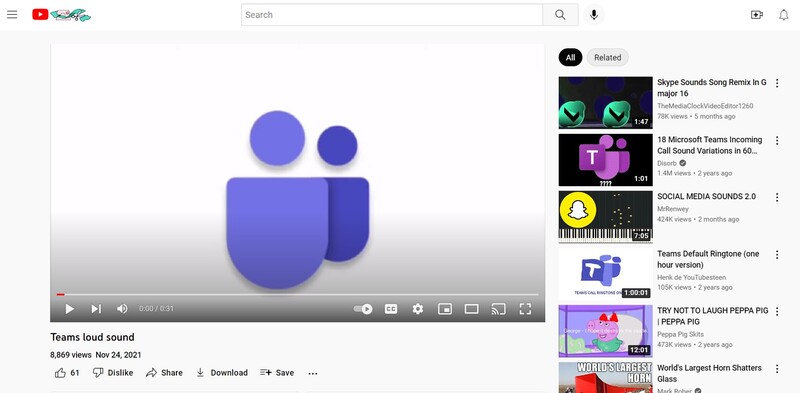 2020-03-21
2020-03-21Education changed
It was my first year teaching middle school history. I was bright-eyed, excited, and felt like I had finally found my calling in life. I went into spring break with such an excited feeling about my new career path. Coming from retail, I could finally have time to spend with my family and not have to worry about making a quota. Then the email came. We would be moving to distance learning and I would not get the chance to finish my first year as an educator with my first group of kids. The sound I most remember was the Google Meets login when someone joined. That sound will forever be associated with the pandemic. The sound I had never heard before became the sound that brought me joy as I was finally able to make sure my students were okay. I remember that sound and immediately checking to see who was logging in. It brought mixed feelings of compassion, empathy, and sadness. Even as we started to get back into the classroom, nothing would ever be the same as it once was. But that sound, that one quick sound, brought on the emotions of this educator. And I hope I will never have to hear that sound again. -
2020-03-05
The Sounds of a Casino
Living in Las Vegas and working in a hotel and casino, I got used to a few things; the sounds of the slot machines and the (albeit unpleasant) aroma of cigarettes and cigars. After being brought back to work after the shutdown, what I immediately noticed was how much quieter the casino floor was with all of the restrictions in place. There was a limit to how many guests we could have in, and social distancing meant only every other machine could be used. While wearing a mask and having plexiglass in front of my station, I had to get used to projecting my voice so that guests could hear me while I was trying to help them. Even now, I still wear a mask and have to actively make an effort to be heard. -
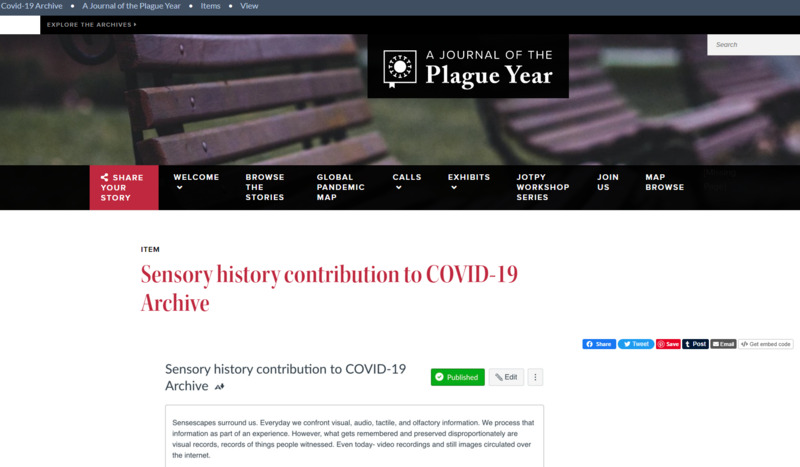 2022-08-22
2022-08-22Sensory Roadblock: Unexpected Detriments and Benefits of Mask-wearing in Gathering Food and Information
During the pandemic, I opted to order all of my groceries online to be delivered. I have never been much of a take-out person and mostly cook at home, so I really love to pick my ingredients when grocery shopping. Missing the in-store grocery shopping experience over the past few years, I sometimes go out to gather my fresh foods, especially after the normalizing of social distancing and mask regulations. Though I still prefer to wear a mask, even when regulations are occasionally loosened, a sensory occurrence that I did not expect to miss or lack as a consequence of mask-wearing is the importance of smell in my food-gathering habits. Being able to check the ingredients for both flavor and freshness qualities by smelling them is such a natural instinct that most lifeforms use to find their food. I never considered myself someone who actively smells things very often, so this sensory roadblock surprised me, as I initially chose to go to the store to get better foods than those that had been delivered to me. I have often come home and found that the asparagus or meat that I had just bought had that unpleasant odor of food past its prime, even though its appearance and texture seemed just perfect. I also miss being able to smell the full intensity of the fresh-cut flower bouquets that proclaim the seasons when going out grocery shopping. This temporary lessening of sense-of-smell from wearing a mask has been a bit of a hinderance in such ways, but it has been beneficial in many others. For example, I have dust allergies and used to become very stuffy after visiting my library due to the book dust—especially since, as a history and art history graduate student, all the books that I want or need to check out are usually the oldest or dustiest ones! Not being able to smell or breathe-in these things has helped me dramatically in my experience of information gathering. I can now spend hours looking over books that I wouldn’t have thought of opening before and have found some wonderful sources for my research. Though of course many historical texts are fully available in online formats and an invaluable resource, I often feel the same way about visiting my library as I do visiting my grocery store—I hope to find something myself that might work even better for my own project, either culinarily or academically. -
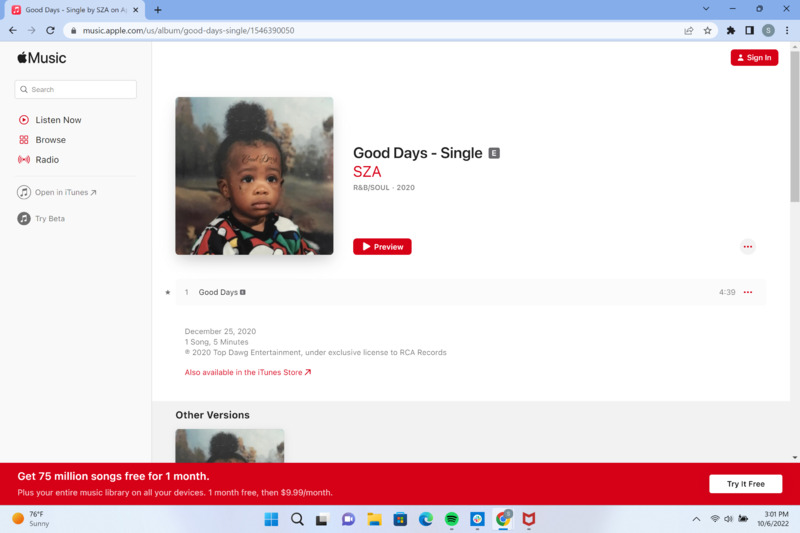 2021-02
2021-02Hoping for Good Days
It was several months since my last day in a classroom. March 13, 2020 to be exact. Friday the 13th. The previous school year we were told it was to be a possible 2 week break that ended up going until the end of the year. What was to become of the next school year of 2020-21? I tried to stay optimistic over the summer and enjoy the time spent with family. We were lucky to have each other and have a yard and house where we felt safe to be quarantined. I knew a lot of my students were not so lucky in that they lived in apartments with several family members. Still I wanted to be optimistic about the upcoming year. As the start of school year date got closer, it was apparent we were to continue online teaching via zoom. I felt I was pretty tech savvy and could integrate technology enough to keep my students engaged, but it was still challenging. I taught incoming freshman 9th grade students. They did not get the “new students” experience of coming to my school and meeting and greeting all the faculty and each other. Initially the expectation was to have all students have cameras on, and for the most part in that Fall semester, my students did. But then towards the break students started getting sick, parents were losing their jobs, some even lost family members. People were sad. We barely made it into the winter break with students attending “online”. I was fortunate to have most of my students log in but in other classes students stopped showing up. And if they did log in, cameras were off and it felt like talking to a void. Were they still paying attention? Were some of them just logging in and doing other things like playing video games or sleeping? I was frustrated, but also empathetic knowing for a lot of these students survival, not academics, was their priority during the time. After the winter break and a return to zoom teaching, it was a palpable sadness. There were people who had lost loved ones, and my students were depressed. I could feel the grief and sorrow through the screen and sometimes I would weep after my classes ended for the day. I had to maintain a persona of optimism for my students online and also keep encouraging their academic pursuits. I have never had such a challenging teaching year like the 2020-21 year. The sensory experience I am recalling is sometime in February of 2021. It was the second semester of school, back from the break and many people had a rough time of the holiday season with loneliness, fear, and loss. I don't know how I came up with the idea but I thought about students sharing playlists with the class. I would review them, and if we had a test together on zoom I would play songs on the background. One particular song I found was “Good Days” by SZA. It was not my style of music, but I knew it was what my students listened to. The day I played that song I started to get a lot of feedback from the zoom chat from all my classes about that song. By this time a majority of students had stopped showing themselves on camera and/or stopped talking, however Good Days sparked something in my students. The intro of the song is very melodic and serene. It is one of those songs that sounds very sweet, but is very sad at the same time. I could tell by the response of my students that it hit a nerve. A few of them began to speak up again in class, a few would turn their camera on again. And of course, I had several sending messages after class thanking me for the song. This happy/sad song connected me again to my students that I thought I had lost over winter break. It gave me a little hope again, and I think it gave some of them hope too. Now, whenever I hear Good Days by Sza it reminds me of those lonely online zoom classes in February and how we were all feeling a bit sad, but a simple song gave us all a bit of hope that the future was to have some Good Days ahead. Lyrics to Good Days All the while, I'll await my armored fate with a smile Still wanna try, still believe in (good days) Good days, always (good days) Always inside (always in my mind, always in my mind, mind) Good day living in my mind -
 2020-03
2020-03Bells Continued to Ring
When the pandemic began, I was finishing up my last few months of student teaching. My mornings included talking to students about their day and weekend plans they had; however, once the pandemic started that changed drastically. The students were gone and the silence began. Highschools are customarily, a loud and busy environment; yet, overnight the students were gone and there was nothing at school but silence. The halls were empty, my classroom was empty, the whole school was empty apart from a small group of staff. For the rest of the year, I would go to school and sit in my classroom alone in almost complete silence. No face to face interaction with students or even other staff. As a teacher, this was taxing on my mental health. From one day to the next my entire occupation had been flipped upside down. I never saw my students again. I still wonder what became of them. The one thing that sticks in my mind from that period is the sound of dismissal bells at school. For some reason the bells continued to ring even though there were no students. Everyday when that first hour bell would ring I would remember that no students were coming. This was a reminder everyday that the world had changed. I recorded the sound of dismissal bells at my highschool. Two years after the pandemic started, this sound still reminds me of teaching during the pandemic. -
2021-01-15
The Smell of Venetian Canals
In January of 2021 my husband and I traveled to Venice Italy for a quick weekend getaway to meet up with my brother & his family. My husband and I had visited Venice before, but not since COVID, let alone during a time when regulations in Italy were quite strict; vaccine documentation had to be shown everywhere we went, masks needed to be worn at all times, etc. Upon arrival to the city, there were several things that instantly struck both my husband and I in regard to the changes we were now witnessing. A far different Venice than the one we experienced a few years before. Not only FAR less crowds, all the masked faces, empty plazas once the sun set, the clear waters of the canals, but the SMELL of Venice was different. Even though I love Venice as a city, I vividly remember the unpleasant smell of the canals when we visited a few years prior, in the height of the summer. Remebering that as we took a gondola ride through the canals, I couldn't help but notice the unpleasant aroma coming from the canal waters. But now that we have found ourselves in a COVID world Venice, the smell was noticably gone, and you could actually see the bottom of the shallow canals as you walked over the bridges throughout the city. I was previously unable to notice how truly shallow the canals were until this COVID world allowed for less polluted waters of Venice, and therefore a better smelling Venice as well. -
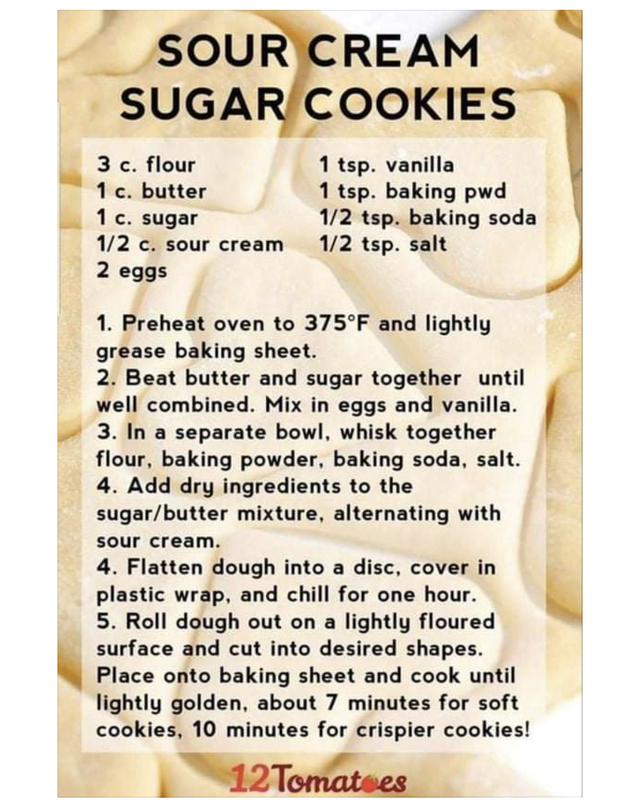 2020-04-07
2020-04-07Adventures in Baking during the COVID pandemic
I was a line cook and baker for many years professionally, but ended up with severe carpal tunnel syndrome and had to find a new profession. For a while I just stopped cooking all together because it was hard for me to give up something I loved so much. But during the COVID-19 pandemic I had a lot of time on my hands, so I started baking and cooking again. I was determined to find the best sugar cookie recipe I could find. This was one of the recipes I tried out during the long lockdowns. They ended up turning out really well. -
2021-06-15
COVID-19, Masks, and Bleach at a Preschool
During the COVID-19 pandemic I worked at a preschool where I taught primarily 12-to-18-month-old children until they were ready to move onto the next class. The use of a face mask and rigorous cleaning methods were a constant part of my day for the entire time I worked there. Now, the memory of that time stands out to me the most through the feel of the mask on my face and the smell of the bleach that seemed to stay with me for days. The kids I taught were too young to wear masks (that was reserved for the two-year-old and up classes), but they did not seem bothered that the adults surrounding them wore pieces of fabric over their mouths and noses. For eight hours a day I felt the pull on my ears, the scratchy material against my nose, and the frustration of the mask muffling my voice when trying to get the attention of ten children in the classroom. Pointing out facial features like a nose or certain facial expressions like being happy or sad with a mask on became normal. More often than not, I would feel a small hand reach up and attempt (or succeed) at pulling my mask down which I proceeded to pull back on as quickly as possible while ignoring how good the fresh air on my face felt. Aside from the masks, the administration required routinely cleaning all toys used everyday with a high concentration of bleach. During nap time, the smell of the bleach filled the room as we cleaned all toys used that day, regardless of the duration of the activity. Even with a mask on, the smell lingered in my nose, on my clothes, and in the classroom to the point that I always felt that I smelled of bleach. When COVID-19 infection numbers were up in the local area or we had case in our school, the bleach concentration, as expected, went up and so did the smell. While I supported all efforts made at the preschool to reduce possible COVID-19 infections, these sensory descriptions illustrate the mental and emotional draining portion of the pandemic history. -
2020-08-11
Long-Distance Learning
The American response to the global COVID-19 Pandemic was multi-faceted. However, of specific importance to the nation were the changes made to public education. As the Pandemic resulted in the closure of businesses, teachers and students were required to continue their educational programs online from the privacy of their homes. Although the effects of distance learning will continue to be seen, virtual learning severely limited the ability of students and teachers to use sensory perception as a tool for learning and instruction. First, distance learning no longer enabled American teachers to utilize the sensory perception of “proximity.” Throughout public education “proximity” is used to encourage student engagement with both instruction and content. Many teachers will walk their classrooms during student activities and use sensory perception to sensorially inform students that they are near to them and are assessing their engagement. Teachers use this strategy as a reinforcement tool to develop students’ ability to stay on task. Yet, during the COVID-19 Pandemic, social distancing policies made “proximity” not only impossible, but also illegal, limiting to what extent teachers could use sensory perception to foster engagement and learning. Second, not only were educators no longer allowed to use the sensory perception tool of physical proximity, but also many educators were forced to rely solely on the sensory perception of sound. School districts throughout the state of California, for example, did not permit educators to require their students to verify their attendance in live video format. The result was educators and students were engaging predominantly through speaking and listening. Furthermore, being denied the sensory perception of sight, educators could not assess to what extent students were engaging with instruction and activities. In conclusion, the COVID-19 Pandemic enacted emergency response strategies which directly affected the education of Generation Z. For both students and educators, sensory perception became more limited for every student. Yet, the sciences, including social science, are built upon the empirical information a human being receives through them. Perhaps this video will serve as evidence to answer the question, “Is the right to sensory perception and scientific information included within the natural rights of life, liberty, and property?” -
2020-06-06
The Town Without a Sound.
It had been a few months after that start of the pandemic. I left my home early in the morning and noticed something odd when I got outside there was no sound. At this time of the year, I would expect to hear kids outside playing in the Cul-de-sac. It was the weekend and early in the morning I expected to hear someone working on their yard, yet no one was around I heard nothing. I also lived close to the highway and if it was any other day I would hear a cars and trucks going by but, today there was nothing. It gave me an eerie feeling like time had stood still or that I was the last person on earth. Lucky a few seconds later I herd a car that pulled me out of this moment of dread. My wife had just returned from working the night shift as a nurse at the hospital. I will never forget the day it was so quiet that I felt the earth stand still. -
2020-03-16
Rubber Gloves, Isopropyl Alcohol and the Arizona Heat
Arizona State University employees, myself included, were sent home mid-March of 2020 due to the rising concerns of Covid-19. I recall driving home that initial day thinking that a sea change was upon us and that uncertainty lay ahead. How would I balance my concerns about this unknown virus yet help keep the peace in my house with my wife and our young boys as the country learned how to live with our new, unwelcome guest? Little did I know the biggest changes in our lives would be the small changes in our daily routines. In looking back at those first days, one scene that was routinely repeated in particular plays out in my memory. We quickly shifted our grocery shopping from in-person purchases to ordering on-line and picking up food curbside outside of the store. Before bringing the food inside our house, my wife and I had agreed that we would wipe down our new food packages with paper towels soaked in isopropyl alcohol. At the time it was unclear if the virus survived on packaging for long periods so we thought it best to disinfect the food. Looking back on it now, it seems silly but the scene still plays out in my memory: I can still smell the latex of the rubber gloves I would put on so as not to completely dry out or burn my hands. When pouring the alcohol onto the paper towels, the smell would sting my nose and a tingling sensation would pervade my nasal passages. When wiping the plastic packaging of say, frozen vegetables, I would hear the crinkling sound of the bag and it would resonate through my ears. To compound the smells and sounds of this process, I would be remiss to not include the fact that this was all taking place in our garage during one of the hottest Arizona springs and summers on record. The heat was oppressive that season, enough to identify with that 'oven blast' description we use in this region and I would be dripping with sweat by the time the task was complete. To say the least, it was a surreal experience; one where if you had told me two weeks earlier, I would be wiping down groceries in a stifling garage to prevent a possible infection of an unknown virus, I would have laughed at you but, alas, I was there and the senses surrounding the scenario were real. -
 2020-03-21
2020-03-21The Day the Call to Prayer Changed in Cairo
If there's one thing you can count on in the Muslim world, it's the call to prayer (adhan) audibly marking the sun's path through the sky, and everyone's route to a mosque, five times a day. It might sound a little different in various regions, a little more musical in Egypt, a little less practiced sometimes in Kyrgyzstan, but it's always the call to prayer, and has been for over 1000 years. But across the Muslim world in March 2020, as mosques closed because of the coronavirus pandemic, the call to prayer was adapted. Instead of saying, "Come to prayer, come to salvation" it said in Egypt, "Pray in your homes, pray on your travels." The wording had been changed like this a few times in the past when mosques were closed because of war or plague or weather, but I honestly never thought I'd hear it myself. The call to prayer seems constant and unchanging, part of the highly sensory experience of Muslim prayer, so this adaptation made the pandemic more present for everyone in Egypt. I'm not Muslim myself, but I talked with Muslim friends all over the world about the change in the adhan. One woman in Kuwait said, "It just sounds so... ominous.. especially at maghrib prayer, it's sunset and getting dark, and the voice over the loudspeakers is saying to stay home... also because I have never, ever heard them change it like this before. Ever. It's like I'm waiting for an eclipse, and the flocks of birds flying away, animals fleeing, etc." I took this video during the last prayer of the day on 21 March 2020 at a mosque near our apartment in Cairo, Egypt. If you're not familiar with the adhan, you obviously won't notice anything different, but this rendition is beautiful even if you don't understand it. If you do, the new wording begins at 1:13. The beginning of the video is a little bumpy while we were getting to the right spot, but then it settles down a bit. -
 2020-03-15
2020-03-15"Handwash Everyone"
I worked at a McDonald’s in March when the United States went into lockdown. Before the lockdown, the drive-thru line was long, the lobby was full of customers, and employee’s rushed around everywhere. The restaurant was always loud with fryers beeping, headsets beeping, customers ordering and complaining, and employee’s trying to have conversations with each other while taking orders all at the same time. People were constantly sneezing, coughing, or sounding like their voices were hoarse, and no one thought anything of it. Everyone went on about their business. After the pandemic, the restaurant was quieter. No more customers were in the lobby, fewer people came through the drive-thru, and fewer employees were at work, less food was being made, so the fryers beeped less often, as did the headsets that warned us when customers wanted to order. One new sound we could all rely on was the alarm that went off every hour, followed by a manager yelling out that everyone needed to wash their hands. The sound of a raspy voice from a customer, a sneeze, or a cough echoed from the speaker above side one in the kitchen, though the entire restaurant and employees would all look at each other in disgust, sure that this customer must have the Corona Virus. The employee in the first booth taking the payment would instantly remove their gloves and rush to scrub their hands before retrieving a new pair of gloves. The person in the second booth who handed the food out the window would be stretching their arm out the window as far as they could in an effort to stay as far away from the person as possible before repeating the same ritual as the last employee in disinfecting themselves. Sounds that usually just fell into the background noise and people assumed were allergies or just a simple cold suddenly elicited a significant amount of fear in my friends and co-workers. While things have mostly gone back to normal, the handwash alarm and manager yelling for a handwash is an hourly reminder that Covid-19 is still around. -
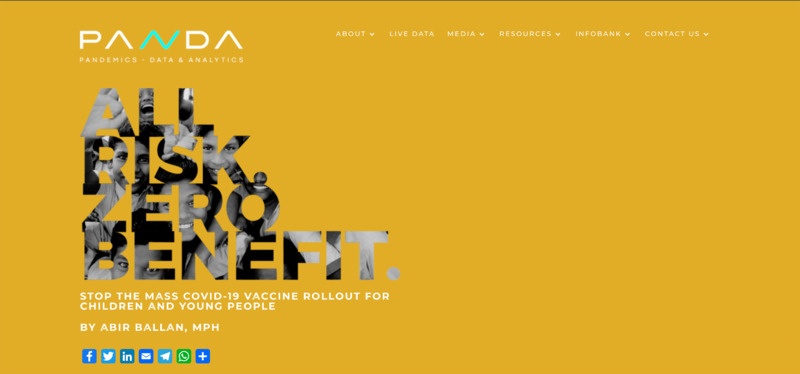 2021-06-25
2021-06-25Pandata falsehoods putting children at risk
The attached link is to an anti-covid vaxx website, specifically about not vaccinating children. The first thing you see is a list of 10 reasons not to vaccinate children, followed by a video. The main message is vaccines for children are not safe. (Which I would personally like to point out is false.) They are pushing the idea that vaccines are coercive and dangerous. The video is titled “What about the kids?”, and the page it’s listed on is titled “All Risk Zero Benefit.” First, we can look at the title of both of these to see tactics of persuasion. “What about the kids?” Exactly, what about them? This creates an emotional appeal to listen to the message, surely everyone would care about kids, and surely you want the best for them? “All Risk Zero Benefit”, a short title, to the point, definitive word choice. There is no room for argument with “zero benefit”. The video itself flashes between different news outlets and interviews with ‘experts’, Doctors. There is the continued tactic of “The other doctors don’t want you to know this”, or “The government is trying to control you”. This is truly stupid and disgusting. If you watch the video, all the clips are from either Fox ‘news’, The Epoch Times, or from something called Brees Media. Fox and Epoch are both conservative right-wing outlets. I looked into Brees Media, as I hadn’t heard of it before. It is a former BBC employee who now created a company that teaches people how to create media content. She (Anna Brees, the owner) has several tweets and Instagram posts that push this anti-vaxx mentality. People tend to trust BBC, at least more so than other news sources, so by continuing to use the Ex-BBC in her bios on everything it begins to create a buy-in for people. -
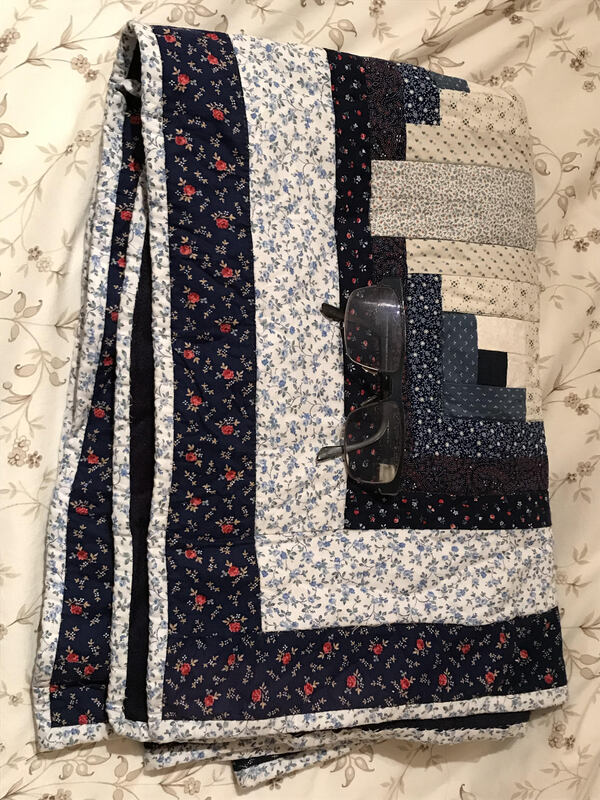 2021-04-22
2021-04-22Hospice and hospitals during a pandemic
This is a photo of my grandfather's glasses and a blanket given to him by one of the hospice nurses. He passed in April of 2021, not due to Covid. There were still a lot of Covid restrictions put in place by the hospital, and the hospice center. Everyone had to be checked in at the front desk, temps were taken, questionnaires filled out, and the number of guests at a time was limited. He was moved to a hospice facility down the road from the hospital that he had been in. I was spending 10-12 hours a day with him at this time. He passed very late in the night and the next morning I went to pick up his remaining items. Most I gave to my dad, but I kept the blanket and his glasses. This, I believe, shows a broader picture of the pandemic in relation to healthcare during this time. Everyday healthcare still was taking place, it couldn’t just stop, but they had to adapt. I’ve heard stories from social media and directly from healthcare workers about being exhausted due to the pandemic and Covid guidelines. All I can say is that even after being tired and working through horrible conditions for over a year, every person I talked to for the week that he was there was kind and caring. Healthcare for the last two years has focused a lot of Covid healthcare, which makes sense, but this, in my mind at least, serves as a reminder of the continuous healthcare that has always been happening. I am so grateful for the team of professionals that helped and cared for him that last week. -
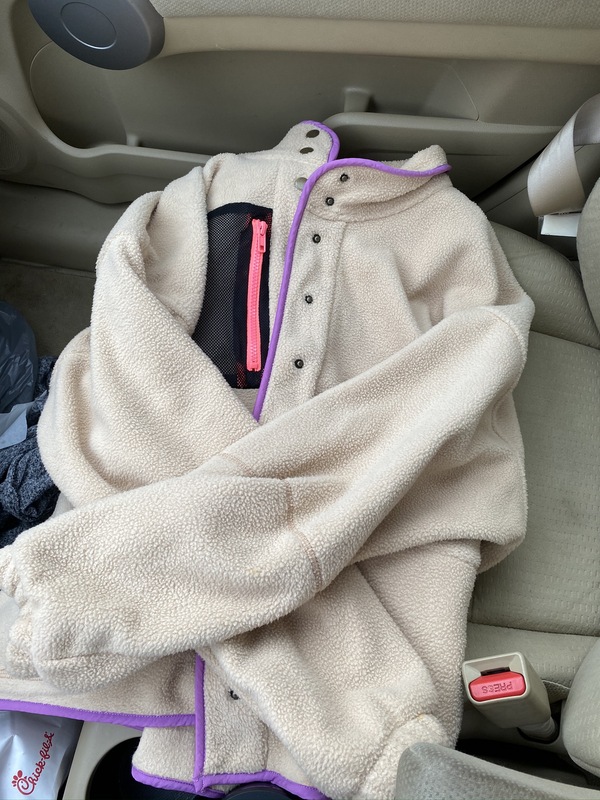 2020-03-16
2020-03-16A Warm Hug
This personal item is a jacket I received from a customer back during the Spring of 2020. I was an essential worker at Lowe's at the time and quarantine had just been mandated. It was an extremely cold and rainy day; cold to the point of where the wind was blowing the doors to-and-fro and I could not ring up a customer without stopping to put my hands in my pockets. As I worked, a middle-age guest, comes up to register and noticed that I was shivering nonstop. She paused as she got ready to hand me her payment and asked if I needed another jacket. I smiled and told her “No, I’m okay,” but she persisted and asked again. I reassured her that I was okay and she nodded and smiled sweetly and told me “thank you” and to have a bless day. After she left, I did not think much about the encounter besides the fact that she was genuinely a sweet and kind woman. About 30 minutes later, the same woman approached me in my line again, but this time with a Target bag in her hand and jacket in the other. With a sweet smile again, she told me that she used the last bit of her cash she had on her to go buy me something warm so I would not freeze the rest of my shift. While it was a small act, it meant a lot to me considering that she was stranger and was willing to go that far to make sure I was okay. I was not able to give the woman a hug after the exchange (we actually gave each other a "COVID fist bump" out of solidarity,) but it honestly felt all the same. Her act showed me that despite race, gender, age, or orientation, we were all one in the same in that moment and that we were all going through the same trials, worries, and circumstances. To this day, I still have the jacket in my closet and I always wear it at home or outside when I need a warm hug. Whether there is an pandemic a war, or any crisis, going on in the world that experience taught me that it does not cost anything to be nice to another human being. Although there were many more hardships I experienced that year, I always looked back to moment for comfort and remembered that there was a sweet lady out there giving me love and endurance. -
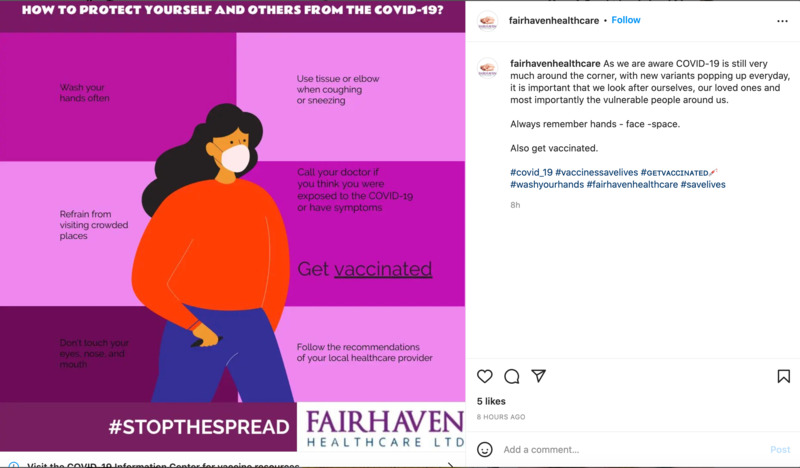 2022-04-07
2022-04-07Ways of Prevention
This is an infographic on Instagram posted by fairhavenhealthcare. This infographic advises people to: use tissues when sneezing or coughing; wash hands often; refrain from crowded places; not to touch hands, mouth, or eyes; follow recommendations from healthcare providers; and get vaccinated. -
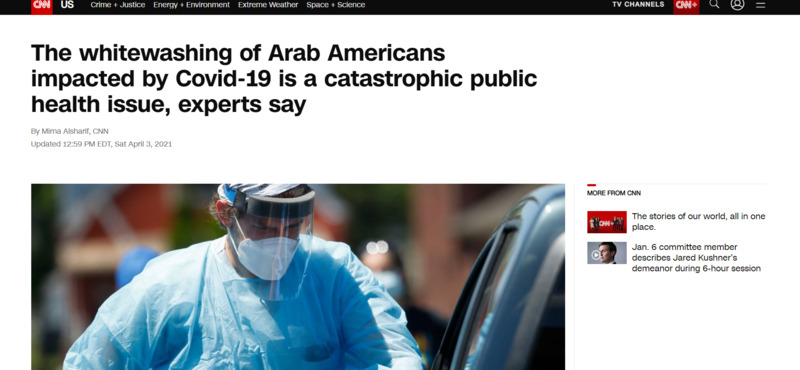 2021-04-03
2021-04-03The whitewashing of Arab Americans impacted by Covid-19 is a catastrophic public health issue, experts say
This article brings up important points regarding the underrepresentation of Middle Eastern and North African (MENA) people and communities in U.S. This article focuses primarily on Arab Americans, but also sheds light on the fact that there are no identifiers for Middle Eastern and North African people on the U.S. Census as their only options are to choose “white” or “other”. As a result, there is a lack of Covid-19 data specific to these communities which prevents support and information being directed to those underrepresented – and often socioeconomically underprivileged – groups. This article is important in demonstrating the vulnerability of this group. Many MENA families live in multi-generational homes, have preexisting medical conditions or risk factors which may make them more vulnerable should they contract Covid, and still some do not have access to the information and support needed to prevent Covid or to receive the proper treatment if infected. Additionally, because MENA people are not able to self-identify on the U.S. Census, the information about how these communities are being affected is not accurate. The U.S. Census isn’t the only place where these identifiers do not exist. Job, scholarship, and college applications (to name only a few) do not provide accurate identifiers for MENA individuals. I think this article is important in revealing the lack of identifiers available to MENA people and how important it is that this is changed soon. -
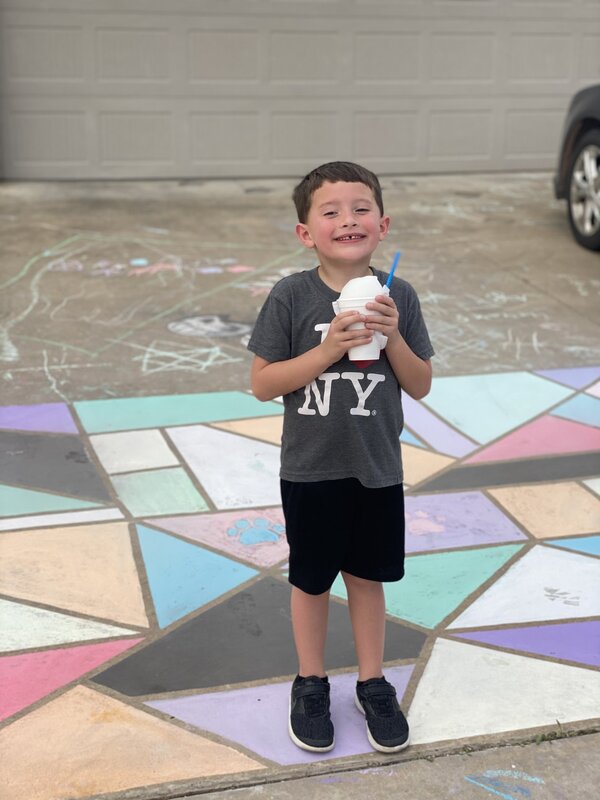 2020-04-08
2020-04-08Neighborhood Sidewalk Art
A few weeks into quarantine our neighborhood decided to decorate all the sidewalks and driveways with sidewalk chalk. This was a great way for the kids of the neighborhood to express themselves and feel a sense of togetherness, even though they were all apart. With the use of the neighborhood Facebook group, we were able to coordinate times for the kids to go around and check out all the cool sidewalk art and leave messages for their friends to read. This really made my son feel like part of something, as a kindergartener he was just getting used to being in school, and then after Spring Break he was not able to return to class and we had to get creative. This neighborhood art project was a bright spot in a very difficult and uncertain time. -
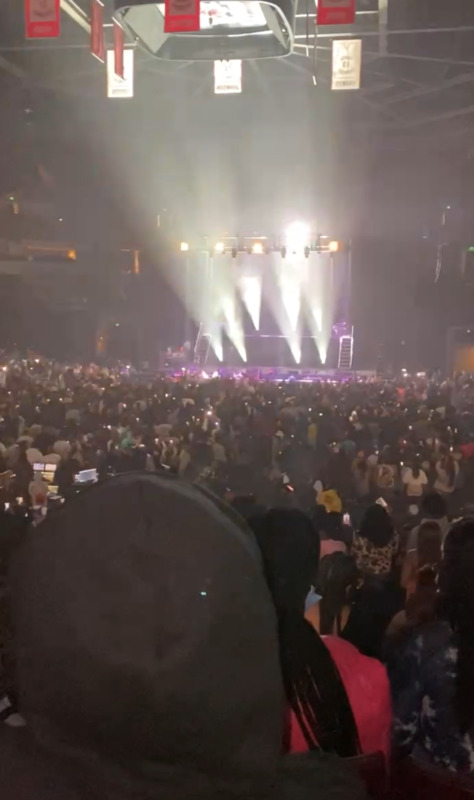 2022-01-14
2022-01-14My First Pandemic Concert
Since the pandemic has commence, I haven't done many public outings or attended big events. This January, I had finally got enough of the courage to go to a concert for the first time in three years. Overall, I would argue that the outing was fun and safe, but I could not help but still feel anxious and scared of what was yet to come despite it being a good time. Part of this was because the concert did not require anyone to wear a mask, nor did that enforce social distancing with the seats like I thought they would. Most of this was because COVID-19 cases had started to climb down despite the onset of the new variant OMICRON at the time. I wore my mask regardless since we were sitting so close to people and still enjoyed myself despite these bypasses. I feel that this concert represents how I and other people felt confident enough to do big social outings again despite the pandemic still going on. I also feel like this concert illuminates how people still seek entertainment and enjoyment in their lives and how the pandemic impacted the way people use to be able to go out and enjoy themselves. Now that things are starting to slow down with the pandemic, people like myself are starting to use this opportunity to go enjoy ourselves, which honestly brings me much hope and optimism about the future now. -
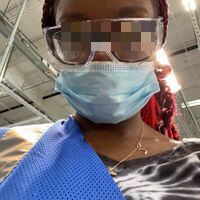 2020-04-20
2020-04-20Stacking Refrigerators: A Pandemic Work Story
This image is of me working at a refrigerator plant during the Spring of 2021. Before I started working at my law firm, I bounced around and did odd jobs to make ends meet. I came across this plant job in my hometown because the plant was suffering from severe labor shortages due to COVID-19. The plant was offering higher pay due to labor shortages and was offering to hire in employees faster because of it. We were required to wear mask inside the plant at all times regardless of it being extremely hot and were expected to do overtime and come in on weekends if needed. I did not only want to highlight the work conditions of this job but illuminate businesses began to operate due to the dire conditions of the pandemic. I also wanted to highlight how some people had to continue to work during the pandemic despite setbacks with workers, production numbers, and work conditions. It is important to illuminate stories like these because many essential workers stories are not heard and recognized. Despite unemployment numbers being at all-time high nationally, people are still working. Therefore, it is important to recognize the sacrifices and contributions workers like I had to make in order to continue to support ourselves and our loved ones. -
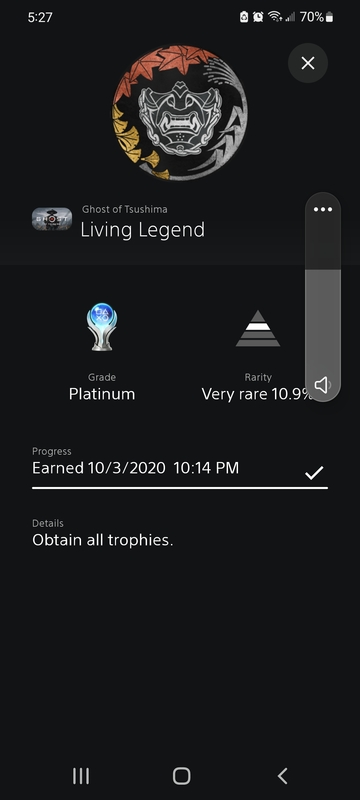 2020-10-03
2020-10-03Tsushima Island, my escape
This is a picture of the platinum I received for beating the game Ghost of Tsushima on October 3rd, 2020. This game came out on July 17th, 2020 and it became my Game of the Year. This was also the year of COVID-19, so I had a lot more free time to play the game and beat it in several months. The pandemic was a difficult time and I just wanted something fun to play. I wanted to forget everything happening in the real world with the pandemic and other problems by jumping back to 13th Century Japan. The game is set on Tsushima Island as the Mongol Empire took its first step toward invading Japan. Ghost of Tsushima is a beautiful, but a brutal game that I had so much fun with. The soundtrack is beautiful and there were foxes to pet! My main character shifted from a samurai who followed the strict Bushido code into a brutal assassin in desperate times. I can relate to this idea of shifting between jobs because I had to shift my job around to adjust to the desperate times I was experiencing. I had to shift from working in person to working online. I wanted to add this to the collection because I want to show how I could escape the reality of COVID-19 and have some fun. -
2022-03-18
6 Ways Covid-19 Has Impacted My Daily Life
The biggest change for me since COVID-19 became a fixture in my day-to-day life is transferring permanently from a physical classroom to a virtual one. Teaching online has its own unique set of challenges in addition to the ones that it shares with classroom teaching. While I personally do not find teaching online to be as satisfying or engaging as the physical classroom, I am hesitant to return. I hear from colleagues about the behavioral issues, the lack of motivation, and the additional stresses placed on teachers by administration. While these are things I also deal with in a way in an online environment, compounding them with the potential risk of COVID when I have immunocompromised loved ones isn’t worth the risk for me at this time. Another big change in my routine is using more delivery services than I did before March 2020. I started ordering groceries through Instacart to avoid having to go the stores after experiencing the chaos more than a few times. Even though grocery stores have calmed considerably, and the shelves remain stocked with most in-demand supplies, I still use Instacart for shopping and having my groceries delivered. Some of this is convenience, but I think that the pandemic has simply changed the way I deal with groceries for the time being. At some point, I will more than likely return to the grocery store to resume shopping in person, but for now using delivery services will remain my weekly routine. Since the pandemic relegated many people to quarantining and spending more time at home, working and going to school virtually, I have noticed that I am not as social as I used to be. While I’ve never been a very sociable person, I’ve noticed that, not only do I not crave social interaction outside of my family and close friends as much as I used to, I have to “prepare” myself for social gatherings and interactions. I have more social anxiety than I ever thought I would and going to events where I may have to hold long conversations revolving around “small talk” make me anxious and tired. I hope that I am able to work through this over time as things become more open and social gatherings and events become more common, but it is another way in which the pandemic has affected me most. When I would leave the house prior to 2020, there were certain items I made sure I had: keys, sunglasses, purse, water bottle. A change to this routine now includes making sure I have a mask in my purse and masks in my car. It’s interesting to note that they have become both a physical and symbolic item in everyday life. Yet, as we all know, it’s an item that is important to have to make sure I am prepared in the event a business requires it or I’m interacting with places and people where it’s smart to wear one. To expand on the symbolism of the mask, another example of change in my life is interacting with anti-mask strangers who think they have an obligation to comment on or ask questions of people who wear one. My daughter came home a couple nights ago very upset because a customer had been rude to her because she was wearing a mask at work. My daughter is 17 and works in a grocery store. She wears a mask to protect herself and, in her words, “to protect her family”. I’ve noticed that the pandemic seems to have made some people feel like it’s okay to comment on and berate complete strangers on personal health decisions like it’s their right. Being socially distanced for months has made some people forget their manners or maybe it’s simply brought out the worst in them. Either way, the idea that a grown man might get in a teenager’s face at the grocery store over something that is none of their business and affects them in absolutely no way, is a startling shift in how people interact with one another since this all began. Lastly, COVID has not been kind to those working in the healthcare profession, and certainly it has made visiting people who are in the hospital much more restrictive. Last September my husband was hospitalized with a collapsed lung. Visiting policies essentially made it so that one person per day could visit him. Where previously I, his parents, children, and siblings might have been able to visit him, now it only made sense for me to be the one since I could bring him what he needed, talk with his doctors, and update everyone else. This most recent February, my mom was hospitalized for a serious health concern. During her entire stay, I was not able to visit her because it was most sensible for my dad to be there for her and ensure he could bring her things from home to make her comfortable. I was able to send flowers to brighten her room, but still the one visitor per day policy held firm. Last night my mom was readmitted to the hospital for health issues related to her previous issue. My dad stays with her all day, and I am not able to because of the visiting policy. It’s frustrating and heart breaking to not be able to see her and be there for her – and to also be there for my dad who needs support and time to recharge as well. The pandemic has highlighted so many privileges and everyday things that were once taken for granted – things most people (including myself) never even thought about. -
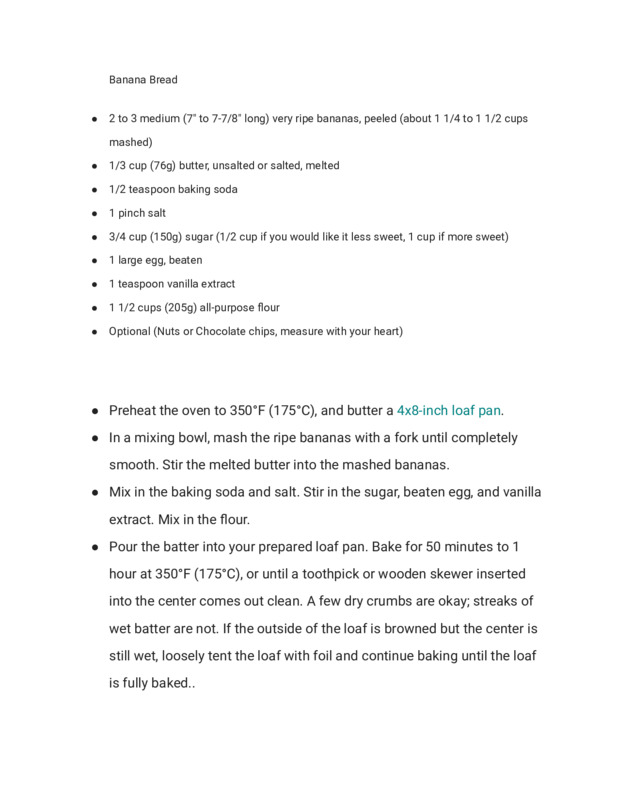 2020-03-31
2020-03-31Banana Bread Madness
Like a lot of people when the pandemic hit, there was a great deal of uncertainty. I didn't know how to function really, not teaching school, so like a lot of people, while thinking about my kids shortened year, I turned to baking. I tried Banoffee Pie and that was a huge faliure, but then , I stumbled on this Banana Bread recipe. I made upwards of 25 loafs in the months that follow. Every time I taste that sweet banana goodness, I think of how much I both enjoyed having that time (I mean, daily naps, what is there not to love) and how much uncertainty there was. -
2022-02-02
Warmth
As we spend more time at home we need to find happiness in the little things. One of those little things for me has been sunbathing with my dog. We hang out on the balcony or go on a picnic and just enjoy each other's company. We feel the sun warm us, we lay in the grass and enjoy a snack. This has been my stress relief during this hectic time. -
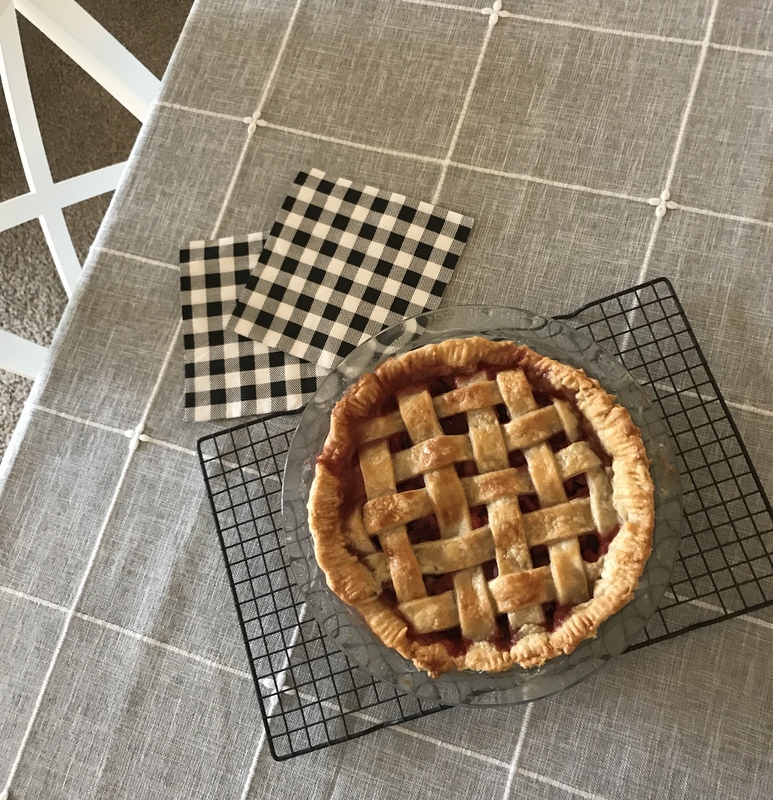 2020-09-27
2020-09-27My First Pie and Other Sensory Snapshots
I gave birth to my first child two months into the COVID-19 pandemic, and so to me, memories of this time are centered around life as a new parent. Because we live in a different state than most of our family, and because we had a newborn (whose immune systems are not well-developed the first several weeks of life) in a global pandemic, we did not go anywhere. I had a few months off of work and school to care for my son, so my experience of COVID-19 to that point was time spent just with my son. As any parent knows, those first few weeks are an exhausting blur consisting of the never-ending cycle of feeding your baby, changing them, and helping them sleep. But the sensory memories from this time of my life that have stuck with me the most involve the feeling of holding my baby; feeling his head on my shoulder, hearing his tiny little breaths and occasional squeaky coos in my ear, noticing the sweet smell of his baby shampoo on his head, feeling him stretch and reposition from time to time. Though it seemed like the days when he would sleep independently would never come, little did I know how quickly they would, and how much I would miss these quiet moments. When he started getting the hang of napping, I suddenly had these open stretches of time in my day, which I was not used to. What to do to fill this time, especially in the midst of a pandemic and with a baby to boot? Like many people, I developed a baking hobby while my little one napped. Now I associated his nap time with the sticky feel of flour and butter on my hands as I kneaded dough for soda bread, the smell of buttery, sugary deliciousness coming from the oven as scones were baking. On my husband’s birthday, I produced my most time-consuming bake so far: a strawberry rhubarb pie. This one required some cooperation on the part of my little guy, whose giggles I heard as he batted at toys in his baby swing while I chopped and prepped the filling and made the pie crust. The finished product wasn’t necessarily perfect, but I was proud of it, and the memory of making it will always stick with me since it is a representative snapshot of that moment in time, a few months into a global pandemic with my young son. -
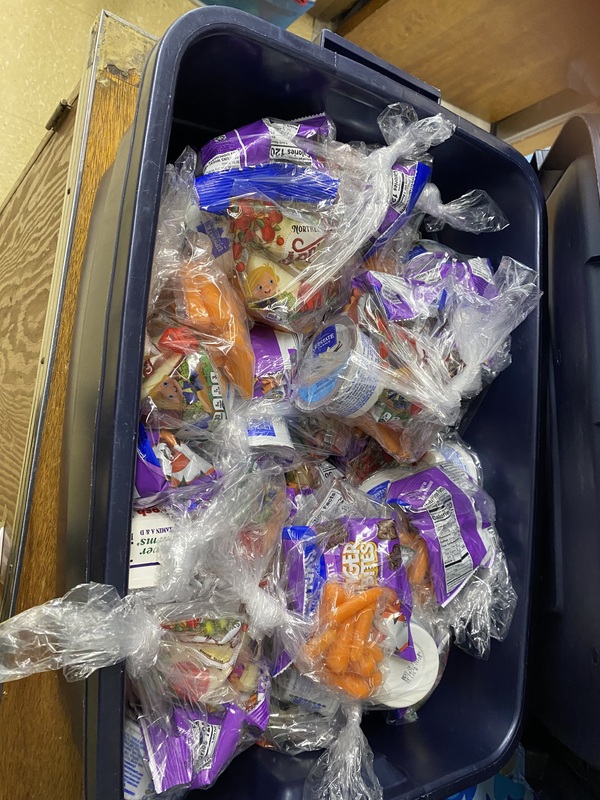 2022-02-01
2022-02-01Bagged Snack
This helps understand the history of the pandemic and the situation within elementary schools and that uneasy feeling is one that everyone throughout the school feels. As covid coutines to hit elementary schools hard. Teachers and staff are doing all they can to keep students safe as well as teach and help them learn. While at snacktime, we are reminded of our current times with our students pulling masks down just so that they could enjoy snacktime. We have to be aware that this pandemic is and will effect the younger generations in ways we can't understand right now. -
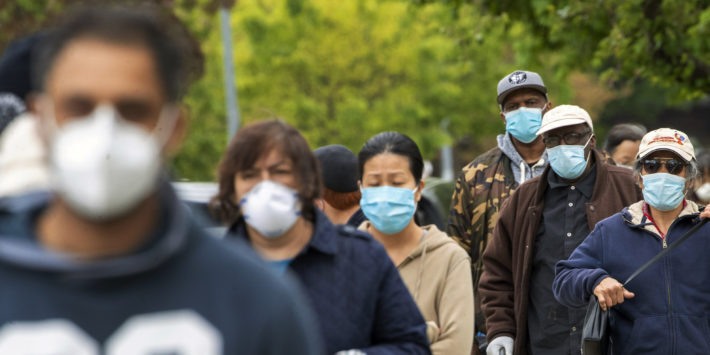 2021-10-18
2021-10-18Don't Forget Your Mask!
The mask has had a huge impact on our sense of touch and smell. For one, breathing with a mask on was an adjustment. Tuna sandwiches became something to avoid at all costs because of the smell you could be stuck with all day by wearing a mask. There is also something to say about the feeling of a mask around your ears and over your nose. The constant practice of grabbing a mask and putting it around one's ears has become a ritual of protection or habit as we are now bound to this object like that of a cell phone which is now always on our person. The sense of touch also adapted to various kinds of masks that were promoted and the variety of masks that would be marketed for commercial value. The mask, one of the few things that forces us to run back inside the house because we forgot it. The mask, a true measuring stick for how quick we can adapt and change society for better and for worse. -
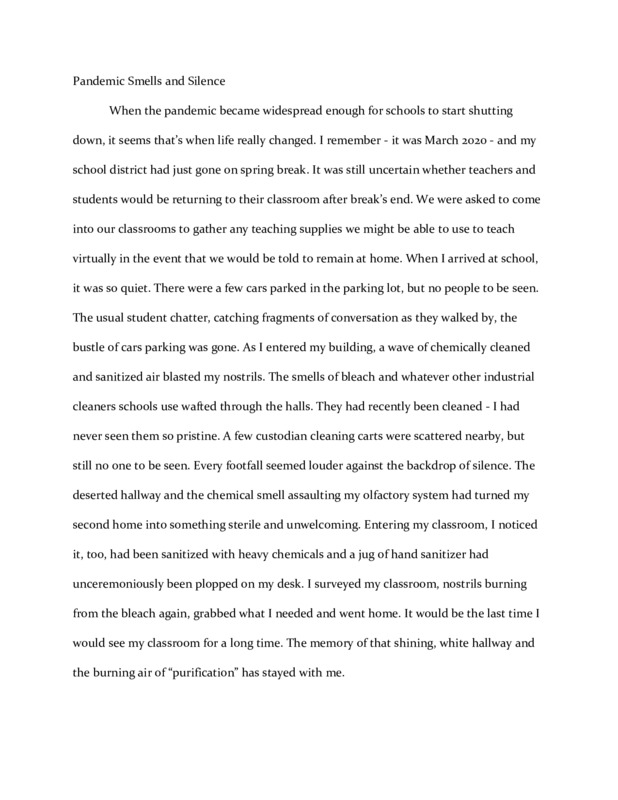 2020-03-19
2020-03-19Pandemic Smells and Silence
When the pandemic became widespread enough for schools to start shutting down, it seems that’s when life really changed. I remember - it was March 2020 - and my school district had just gone on spring break. It was still uncertain whether teachers and students would be returning to their classroom after break’s end. We were asked to come into our classrooms to gather any teaching supplies we might be able to use to teach virtually in the event that we would be told to remain at home. When I arrived at school, it was so quiet. There were a few cars parked in the parking lot, but no people to be seen. The usual student chatter, catching fragments of conversation as they walked by, the bustle of cars parking was gone. As I entered my building, a wave of chemically cleaned and sanitized air blasted my nostrils. The smells of bleach and whatever other industrial cleaners schools use wafted through the halls. They had recently been cleaned - I had never seen them so pristine. A few custodian cleaning carts were scattered nearby, but still no one to be seen. Every footfall seemed louder against the backdrop of silence. The deserted hallway and the chemical smell assaulting my olfactory system had turned my second home into something sterile and unwelcoming. Entering my classroom, I noticed it, too, had been sanitized with heavy chemicals and a jug of hand sanitizer had unceremoniously been plopped on my desk. I surveyed my classroom, nostrils burning from the bleach again, grabbed what I needed and went home. It would be the last time I would see my classroom for a long time. The memory of that shining, white hallway and the burning air of “purification” has stayed with me. -
2020-04-01
Pumpkin Spice Candles
One thing that captures a sensory memory that relates to the COVID-19 pandemic for me is candles, specifically pumpkin spice candles. My wife and myself, like many other people, spent the majority of 2020 shut inside our home. Prior to this pandemic, we would often go out 3-4 nights a week. Nothing crazy, of course. Dinner, bowling, movie, etc. Typical married couple dates. However, once we were shut inside our house, we had to find other little things to occupy our time so we wouldn’t go stir crazy. My wife started buying a lot of scented candles from Amazon, and her favorite was pumpkin spice. I swear, my apartment smelled like pumpkin spice from about April of 2020 to January of 2021. The scent helped her relax, and it made me happy to know that she was finding ways to keep herself settled and centered. Now, whenever I’m out somewhere and catch a scent of pumpkin, I think of the two of us trapped in the apartment but working together to make the whole experience into a positive. I know that this is probably more of a sentimental story than what we were supposed to write, but this is what first came to my mind when I saw this assignment. -
2021-10-17
The Covid Disconnect
The story and my experience are an example of the many ways in which the pandemic affected individuals in different ways. It goes without saying that each person was impacted in varied ways due to Covid-19, however, not all of them were either explicitly negative or an outcome that is easily defined as being either beneficial or harmful. During the height of the pandemic in the United States, I was employed as an Assistant Warehouse Manager in Green Bay, WI. My workload and responsibilities were already a little taxing, but once things got in full swing with Covid they became even more so. I went from working an average of 60 hours a week to over 75. This was mainly due to about a third (or more) of our employees being out of work due to quarantine-type measures or actual illness. This went on for months at the beginning. Many weeks out of that time period there were as few as about a dozen of us running three shifts in a warehouse that normally employed roughly 40 workers. Also at this time, my wife became unemployed because her place of employment shut down. Others around me were losing their jobs in droves and facing financial hardship. But due to my position and the nature of the job, I had never had more job security and we never faced any kind of financial difficulties. On the contrary, during the entire pandemic, my wife and I never went without or struggled. This gave me a surreal feeling and one that I almost felt guilty for living through. Aside from some minor changes in my daily life, I barely noticed any personal changes due to Covid. All in all, it was an extremely odd time to live through; the pandemic wasn't necessarily bad for my wife and me, but I know it was for countless others. And that made it all the more strange. -
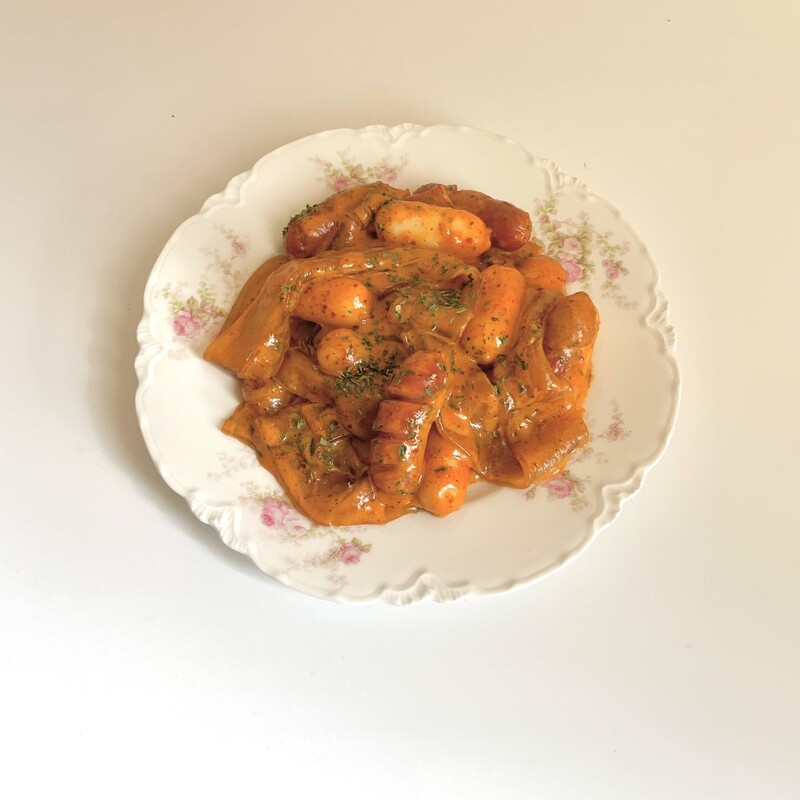 2021-10-17
2021-10-17A taste of my motherland with a new twist - Rose Tteokbokki
Amid the COVID-19 pandemic, my favorite pastime was watching various cooking and food story-time videos on YouTube. Yet, there was one video in particular that caught my full wide attention. I remember on May 6th, 2021, at around 10:45 pm PST, this video appeared on my YouTube recommendations. The video thumbnail showed one of my favorite Korean street foods, Tteokbokki (Korean spicy stir-fried rice cakes), but with a new twist! Growing up, I associated Tteokbokki with flavor notes such as the spiciness of the Gochujang and Gochugaru (Korean chili paste and chili powder), the sweetness of the Mulyeot (Korean corn syrup) in which also helps give the rice cakes its glossy shine, as well as using Sogogi dashida (Korean beef stock powder) to further enhance the umami tangy flavor. Of course, there are other variations of Tteokbokki such as Jjajang Tteokbokki (made with Black bean paste) and Gungjung Tteokbokki (made with both Soy sauce and beef) but the modern recipe with the Gochujang never failed to hit all my tastebuds. Well, that was until I discovered the video. The video used the modern Tteokbokki recipe, but also adding in a new twist with ingredients such as heavy cream and milk to give the Tteokbokki a pink color. Because the Tteokbokki resembled the pink colors of a Rose pasta sauce, it became “Rose Tteokbokki.” After watching the video and doing some research on Rose Tteokbokki (I ended up staying up till 3 am) I became convinced and made some for brunch. Making Rose Tteokbokki for brunch was the best decision I ever made because it still kept the delicious flavor notes of the modern recipe but with the extra creaminess and cheesiness thanks to the heavy cream and milk. Also, adding in meats such as sausages and bacon along with Korean wide glass noodles gave the Rose Tteokbokki a unique chewy texture combo. Once I finished up the Rose Tteokbokki, I posted a picture of the Rose Tteokbokki on my social media accounts, and one of my friends who live in Seoul replied with, “Jungeun! You’re also joining the Rose Tteokbokki bandwagon?! Everyone in Korea is rushing to make their own and/or ordering from the delivery apps because of Covid! Once Covid ends, come visit me and let’s eat Rose Tteokbokki together!” Reading my friend’s response left me with a big smile on my face, and it felt great to connect with the motherland even without physically being there through Rose Tteokbokki. -
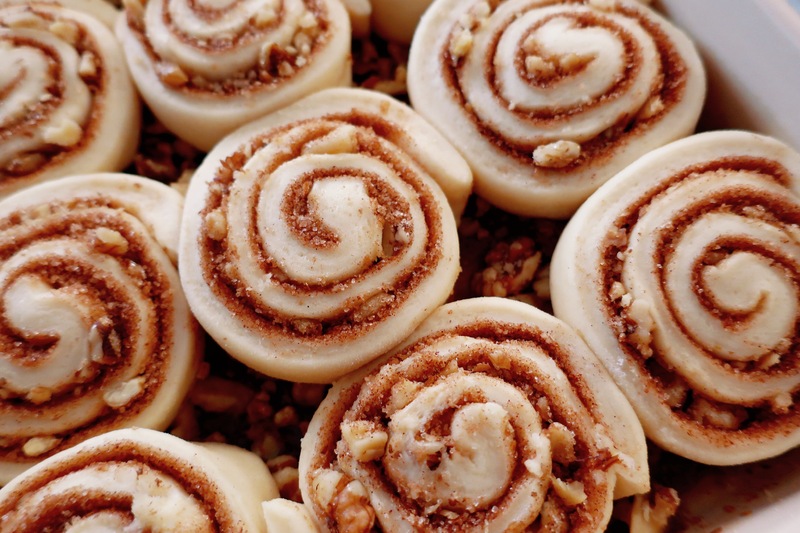 2021-09
2021-09The comforting smell of cardamom and cinnamon on a Sunday morning
One of the most defining characteristics of my quarantine has been learning how to bake. After a year and a half, I am finally comfortable kneading, proofing, and baking. I have learned the tell-tale signs of under-proofed and over-proofed bread by touch (slightly indent the bread with the end of your finger and how the dough springs-back will tell you all you need). I have learned to listen for the hollow sound of fully cooked bread. However, one of the greatest joys I have found with baking is filling the house with the smell of cinnamon, sugar, and cardamom on a Sunday morning with my slightly adjusted cinnamon roll recipe from our well-used Betty Crocker’s 1961 New Picture Cookbook (it was my mum’s before me). My family is Scandinavian, and the smell and taste of cardamom is ever-present in Scandinavian baking. Kanalsnegl, klejner, and fødselsdagboller are all delicious Danish and Norwegian cardamom classics. But Betty Crocker’s cinnamon rolls are also highly popular in my house. From this, a fusion roll was born. On Sunday mornings, the house is filled with cinnamon and cardamon of these classic buns. The Betty Crocker recipe calls for two teaspoons of cinnamon filling, but I sub one teaspoon with cardamom. I also add a pinch of cardamom to the butterscotch topping. In a time of stressful uncertainty, the smell of freshly baked rolls with cinnamon and cardamom is like wrapping up in a comfortable blanket. I have attached the recipe if you want to try this sensory smell experience, too. -
2020-05-03
Quiet Lockdown
In the part of Maryland I live in, there is a lot of noise pollution caused by cars and planes. On one side there is a large international airport, a busy road on the other and a large highway on the third side. Almost every day, the sound of cars, planes and the occasional helicopter can be heard. However when the COVID19 pandemic began to pick up pace, lockdowns were set up in an attempt to slow its advance. While the affect of this was seen in large empty parking lots at the airport, it could also be heard. The roads were quiet, as less people went out to shop, see family or go out to eat. In addition with very few people traveling, the daily noise of airplanes declined significantly. Everything became far quieter and a reminder of the lockdown, a constant reminder that we were going through a major event in world history. However while the quiet brought about by the lockdowns was a reminder of the pandemic, the return of noise was just as much a reminder. When planes and particularly cars started to create more noise pollution, it showed that even with a global pandemic and lockdowns, it wasn't going to stop people from going out.
